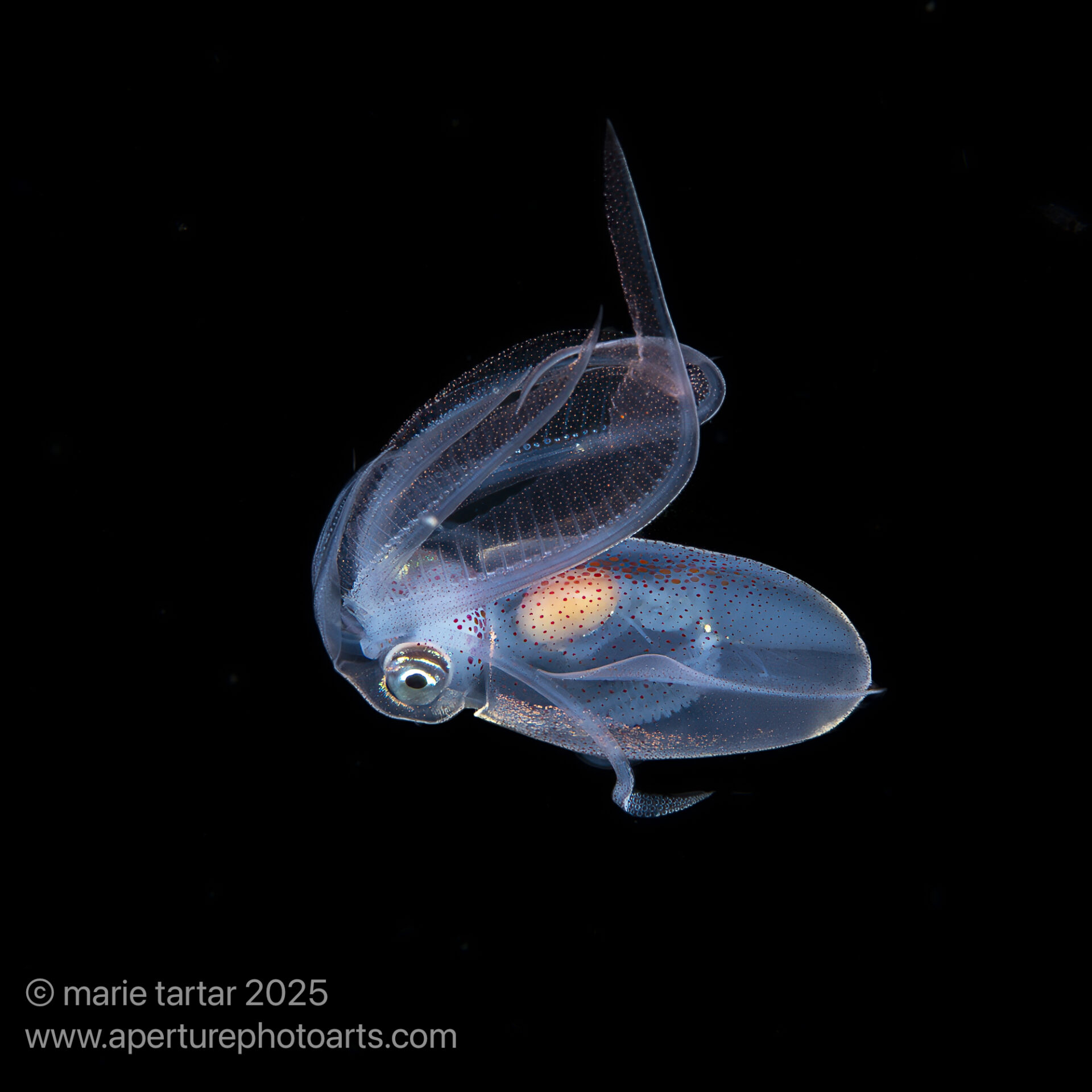
Thursday, April 24-Saturday, April 26, 2025
It’s always hard work packing for an underwater photography trip, but this trip had the added complication of having to evacuate our upstairs bathroom in advance of the demolition and remodel which would start while we were away. Effectively, we had to anticipate our needs for the next months and move clothes, shoes, toiletries and essentials to the guest bedroom on the other side of the house, as well as de-install artwork and put away ceramics that might be endangered by the construction traffic.
Our usual driver David had a procedure the day before departure so had arranged for Scott to drive us to LAX in the evening. Since our garages would be blocked by scaffolding on our return, we arranged our pick-up at the hospital, leaving both cars in the parking garage.
Greg arrived to LAX from Chicago earlier in the day and rented a car so we beat him to the Star Alliance lounge, notable only for the food being unfortunately mediocre.
On board our non-stop 15-hour flight to Manila, our seats in 2A and 2C (in a plane with a 2-3-2 business class arrangement with nearly lie-flat seats) stubbornly refused to respond to pressure on the appropriate buttons. Nor could they be manually arranged in a sleeping position. There was one middle seat open, to which I was headed to sleep, when the cabin attendant suggested a better solution. A pilot was ejected from his middle reclining seat to Steve’s and the adjacent seat’s occupant was placed in the front middle seat. They handled this well but I was annoyed thinking the staff must have been aware these adjacent seats were not functioning properly. It isn’t like someone books in biz class for the food after all; it is all about the ability to sleep.
I did manage to sleep and Steve did too, even more. I watched one Korean thriller called Following, in which a realtor who abuses his access to apartments to “peep’ into the lives of the residents. The tables are turned on him when he becomes obsessed with a pretty young social media influencer. I also listened to short stories from another most enjoyable Amor Towles book, Table for Two.
The Manila airport seemed more chaotic than I remembered but after hastily completing the E-travel pass, we made it through to our pick up by Joel.
This trip was a 3-legged construct, sprawling over 3 weeks. Lynn Morton put the nucleus of the trip together back at the end of 2023, with a week at Malapascua at the northern tip of Cebu and another at a resort in the Anda area of Bohol, Amun Ini. Steve, Greg and I added on a pre-segment, a return to Anilao, wanting to do more blackwater diving.. Crystal Blue was fully booked with workshops already, so we contacted a private dive guide our friends Bob and Debbie like, Dennis Corpus, and decided to stay again at Aiyanar, which we knew from our first trip to Anilao, in 2016. .

Aerial view of Anilao, Batangas, Philippines. Some of the Filipino style boats with double outriggers, called bangka, are terribly noisy.
Sunday, April 27, 2025
The highlight of the breakfast buffet was sliced fresh mango, which the staff instantly learned we wanted added on to every meal. Fresh Filipino mangos are one of the delights of a stay in the Philippines.
We arrived early enough the day before to organize our gear and build our cameras, so were raring to go by the time morning rolled around. For our 2-tank morning dives, Dennis and crew took us to Hydee’s Point and Twin Rocks. Hydee’s is full on muck, while Twin Rocks is spotted with patches of coral. A turtle popped its head up repeatedly to eye us balefully on our surface interval.
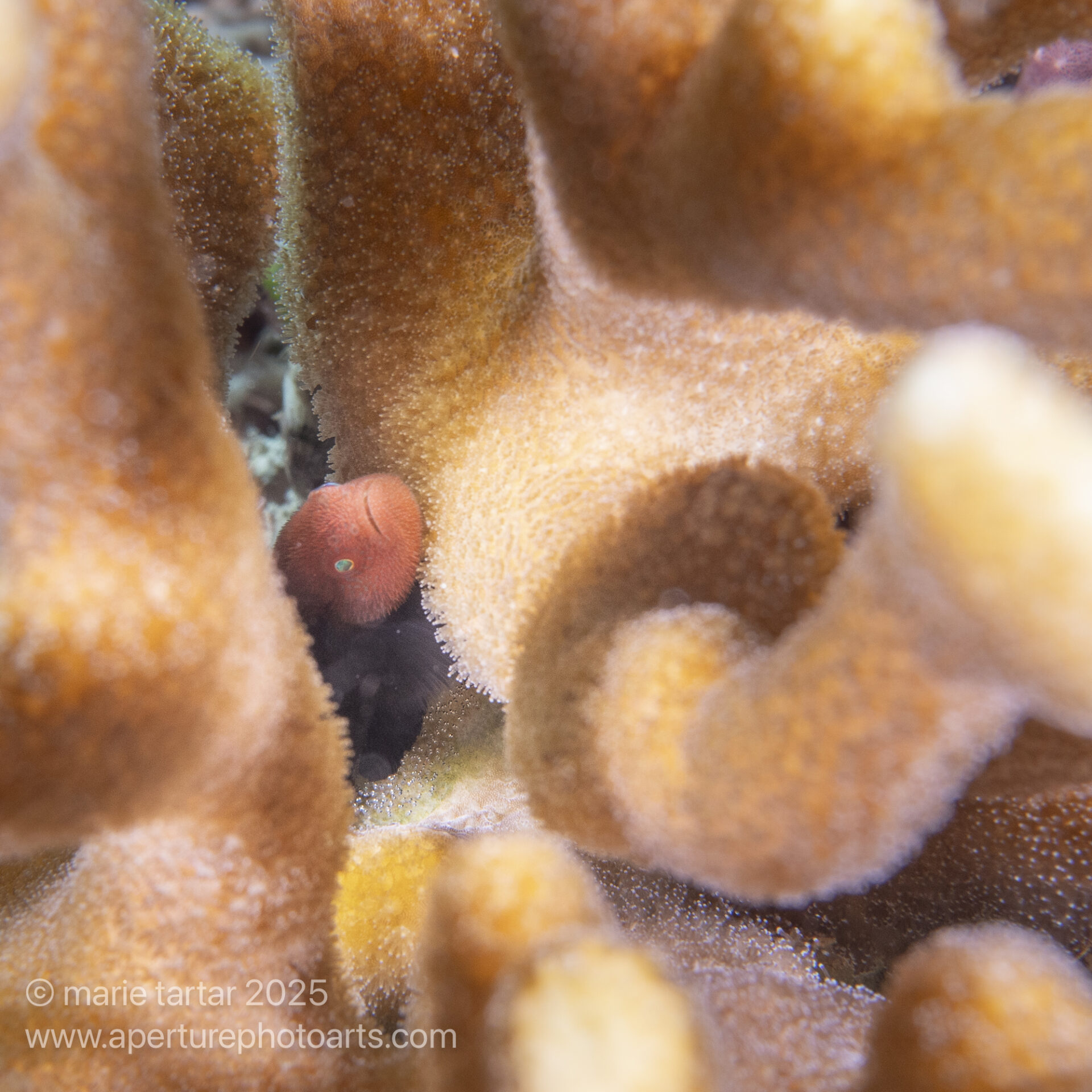
Deep in the recesses of a Pocillopora coral, a red bearded goby ((Paragobiodon modestus)) defends its tiny translucent eggs (the tiny pearls below the fish), which were gone by the next day. (Anilao, Philippines)

Another attentive parent at work, busily, aerating and tending a reddish patch of eggs (Anilao, Philippines).
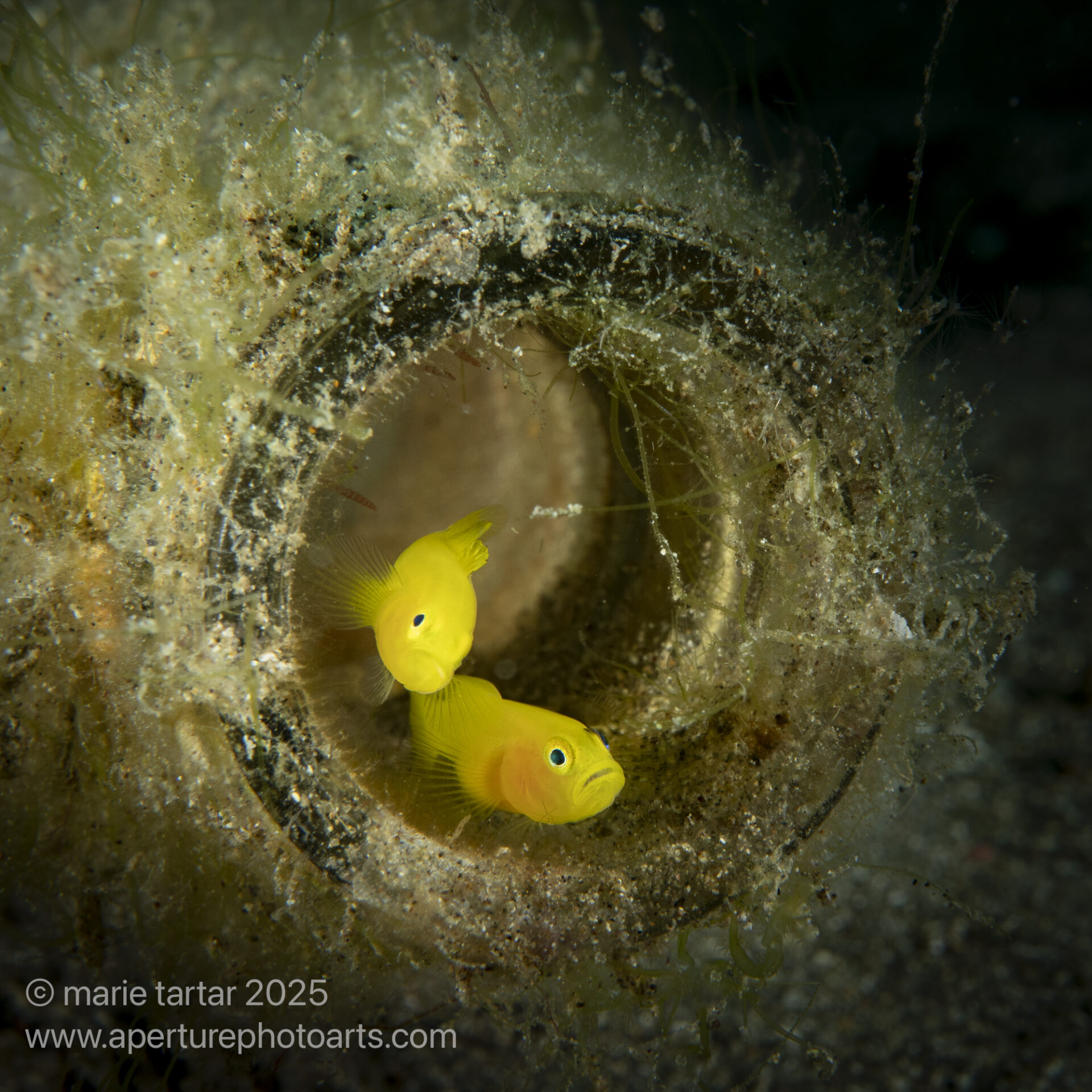
Pygmies in a bottle: Pygmy golden gobies inhabit algea-encrusted bottles on the sand sea floor. (Anilao, Philippines)
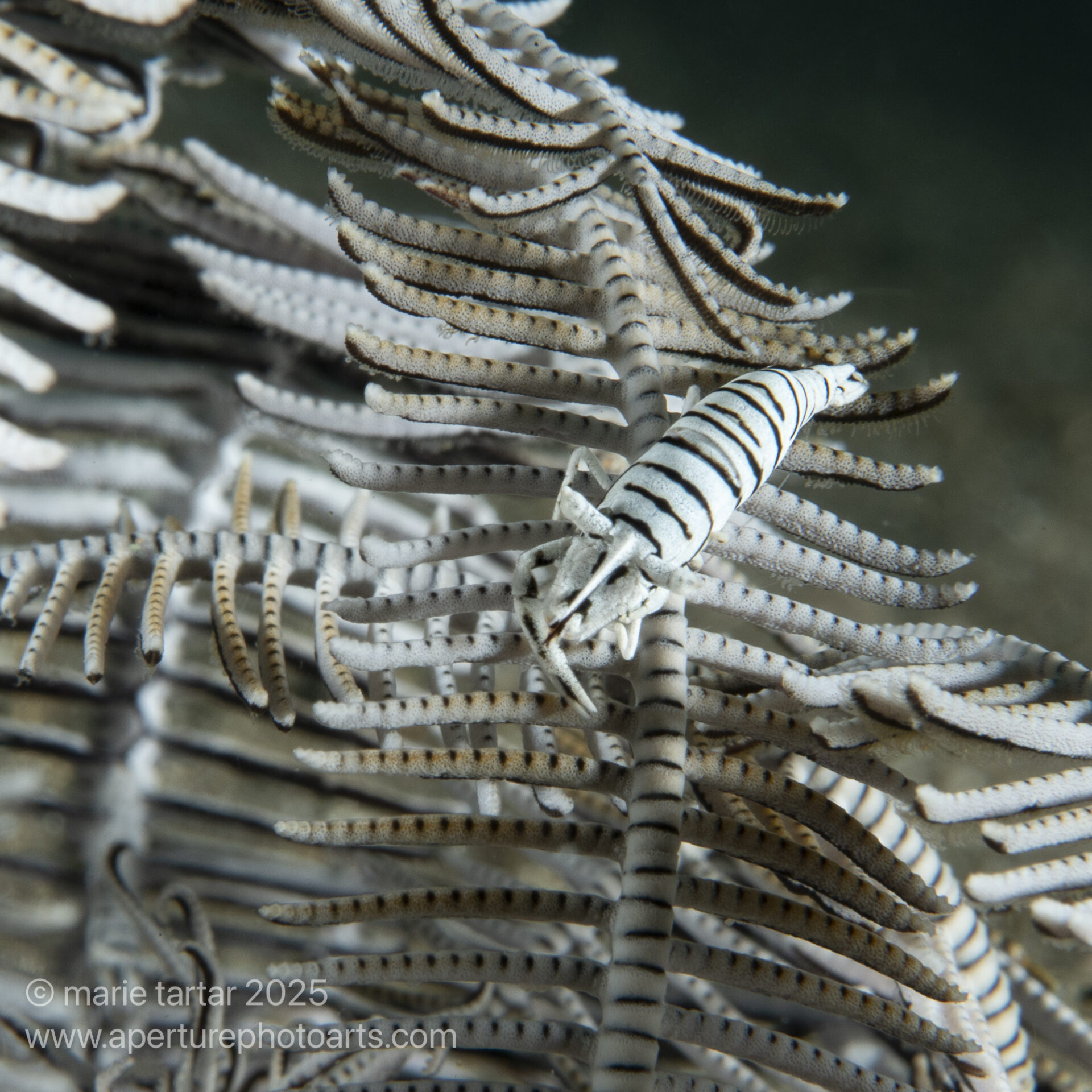
Nature’s perfect camouflage: a black and white crinoid shrimp perfectly coordinated with its crinoid home (Anilao, Philippines).

Underwater fireworks (clustered pinwheel worms): I hear the clash of cymbals from John Phillip Sousa’s The Stars and Stripes Forever when I see this image.

Especially appealing Porcupinefish in Anilao, Philippines. I have trouble swimming past barrel sponges without peering down into their depths.
Yes, it was a very good first morning back in Anilao. We also saw a banded sea krait and a black (subadult male) ribbon eel. Dennis proved to be an excellent guide, pointing out hidden subjects, even willing to hold snoots steady. I was surprised to run out of battery during the second dive.
We took the afternoon off, fortifying ourselves with mango shakes, which we had to hurriedly slurp, racing against the collapse of the paper straw with which they are served.
In the evening, we did 2 blackwater dives in Janao Bay, with dinner consumed on the boat on our surface interval.

I only got off 2 shots before this tiny, gorgeous squid jetted away! Pencil squid (Uroteuthis chinensis), Anilao, Philippines. This beauty is commercially fished in southeast Asia.
A tiny squid and what I took to be a tiny white octopus were the only subjects other than random salps and comb jellies, subjects that would have been exciting to us back when we first tried blackwater diving.
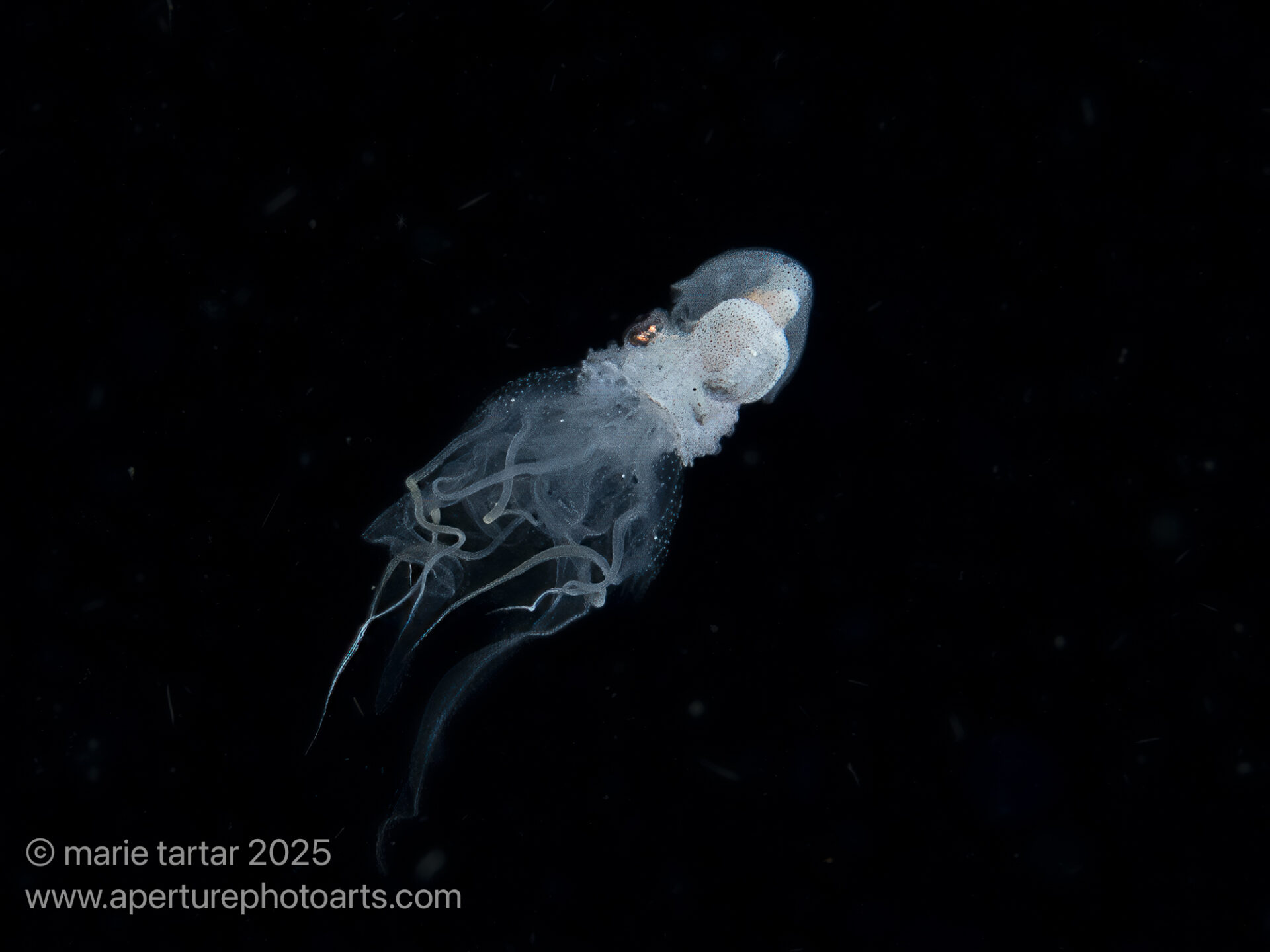
Another blackwater subject not ready for a prolonged portrait session. I thought this was a tiny white octopus that jetted away after one shot, but what I took to be an octopus’ tentacles are actually the tentacles of the jellyfish it is riding on (bottom half of the subject) and the male argnaut octopus is indeed tiny (the top half of the subject).
My tiny octopus was subsequently identified by Dennis as a male argonaut atop a jellyfish. What I had taken for octopus tentacles in the heat of the moment (I only got off one shot before it jetted away) were the tentacles of the jellyfish on which the argonaut was riding. So, in a way, I was right…it was a tiny octopus, although even tinier than I initially thought.
I ran out of battery again on the second dive, making me have to take a miss on photographing a beautiful juvenile African pompano. I wondered if my upgraded camera (Panasonic GH5 ii) preferred a different battery to my other camera which also works in this housing (Panasonic GH5). AS I never had the problem after the first day, I later suspected what appeared to be full charges were less than full, run down since charging before leaving home.
Monday, April 28, 2025
Our plan to do a 2-tank morning dive was foiled by Greg’s camera battery running out. His new monitor proved to be the culprit. Dennis figured out how to tame the problem back at to resort, where we decided we might as well have lunch and do a single afternoon dive.
At Hydee’s Point, we revisited the critters we photographed the prior day. Dennis held a snoot spotlight for us over the bearded goby’s hideout, but the eggs were gone.
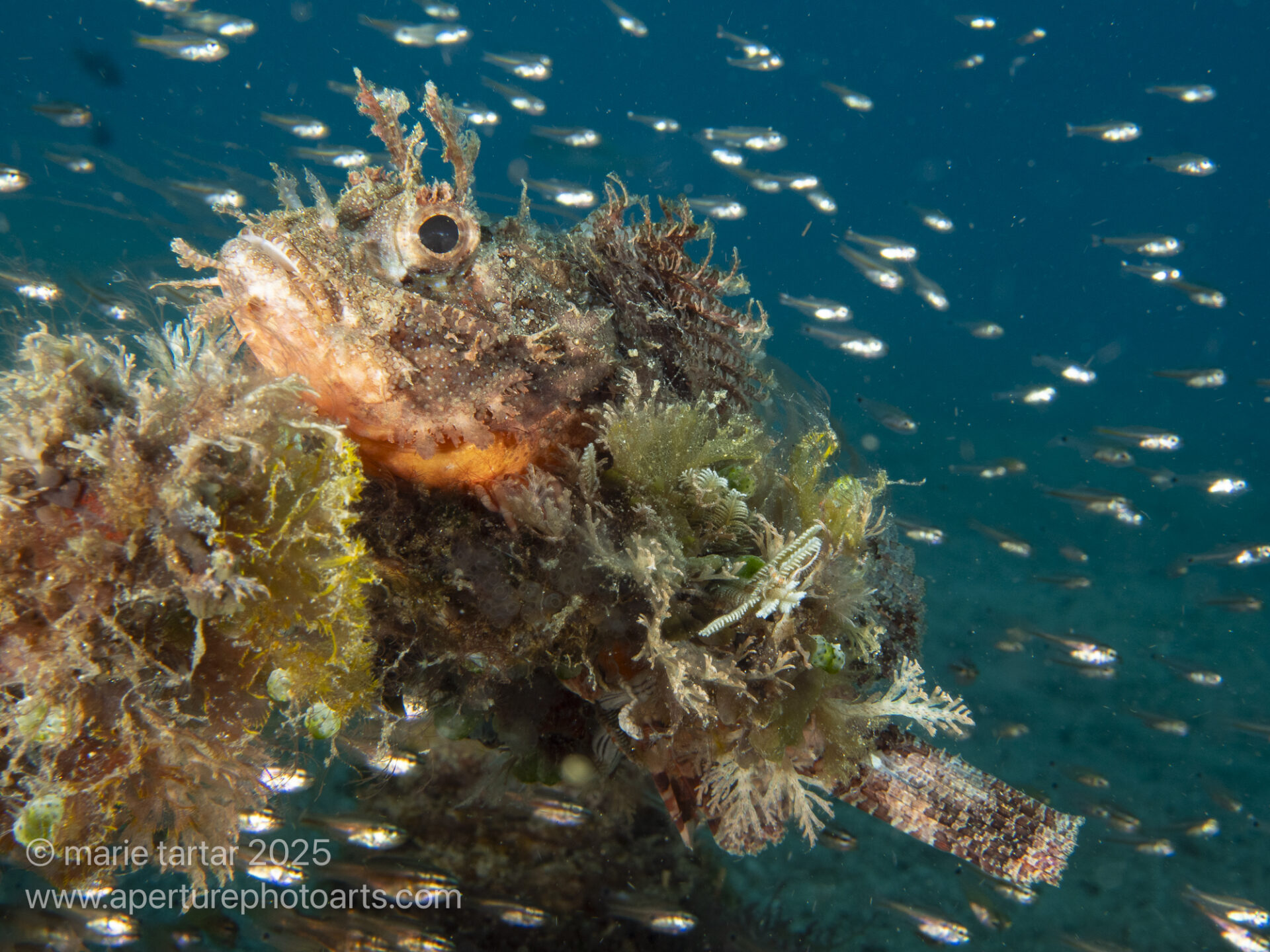
The anemonefish with eggs was still at it, but a tiny scorpionfish had taken up residence next door. Usually, I don’t like it when other fish photobomb an image, but occasionally, it works.
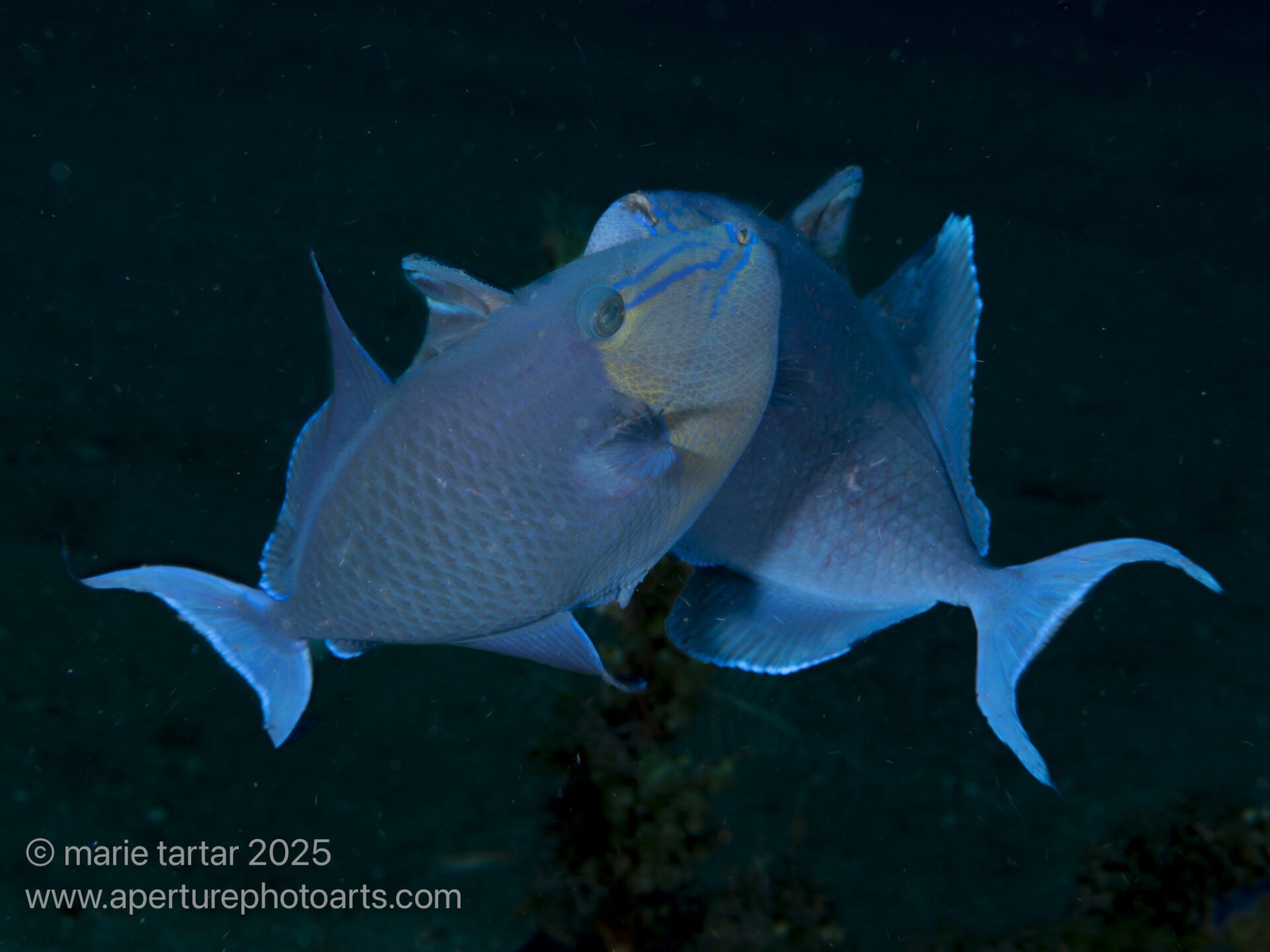
While I was waiting for Steve and Greg to finish photographing the anemonefish with eggs, I saw an interesting behavior of pairs of redtoothed triggerfish (Odonus niger), swimming rapidly and straight for each other, butting heads, swirling around and around until abruptly parting, only to do it again. I didn’t see any gametes in the water column so thought this might be male dominance displays or possibly courtship behavior.
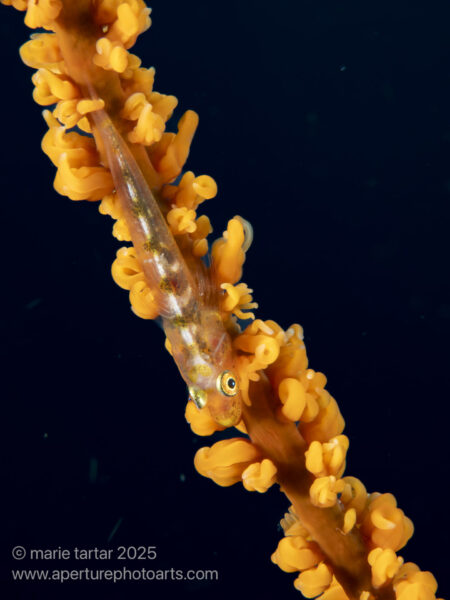
An orange whip coral concealed two wonderful subjects, both color coordinated beautifully with their host. Bryaninops yongei, also known as a wire-coral goby, can often be found in pairs on Cirrhipathes anguina corals.
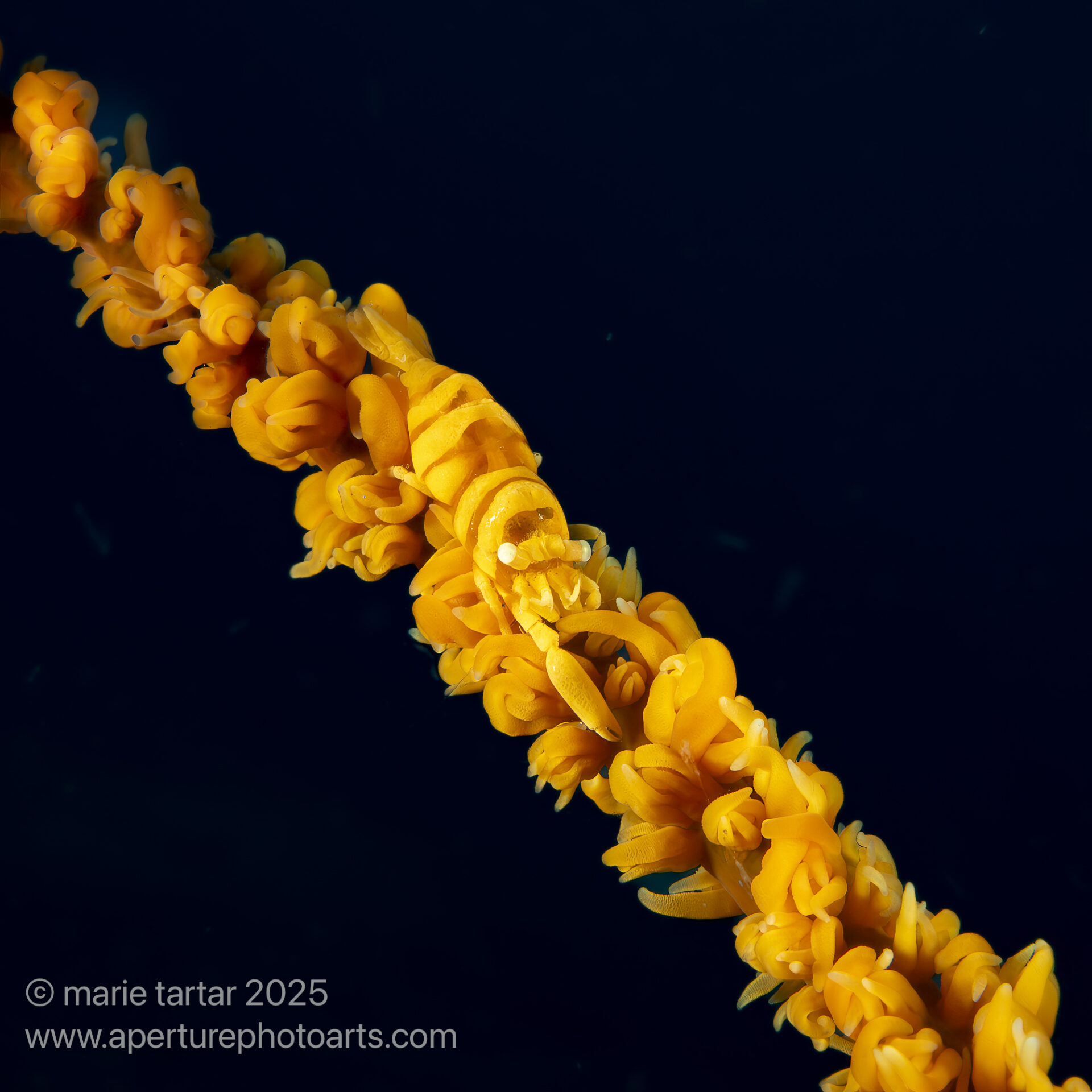
Another resident of the wire coral: Anker’s Whip Coral Shrimp (Pontonides ankeri), Anilao, PHilippines.
Our afternoon dive on Koala was a rapid drift to intersect with a large brain coral housing multiple green coral or comb-toothed blennies. Tiny heads peered out from the expansive articulated coral boulder.
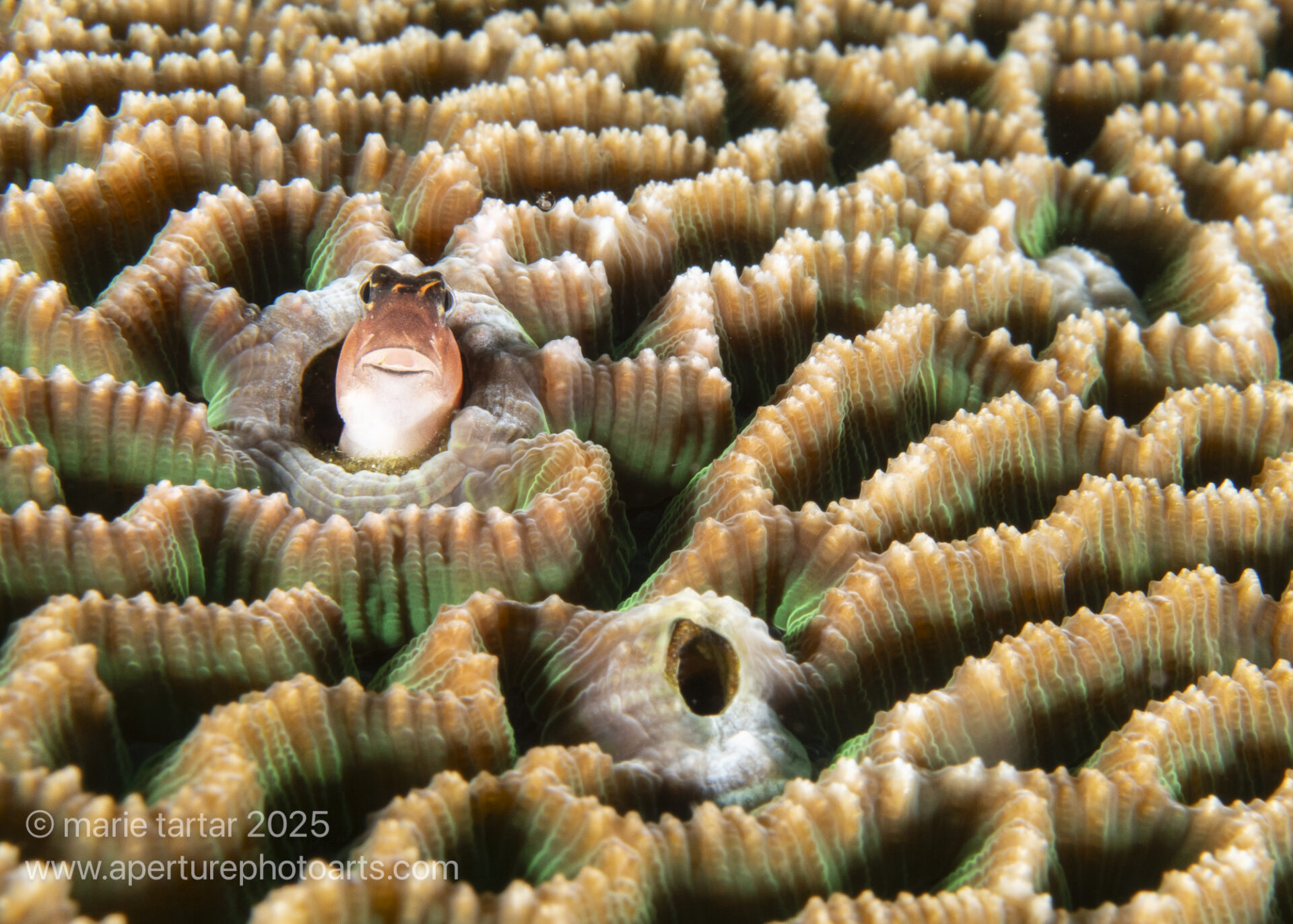
Have you seen my friend? Combtoothed blenny peers out of a worm hole in a large brain coral, which housed at least 4 others in similar accommodations (Anilao, Philippines).
The large mound provided some shelter from the current but it was strong enough, it was difficult to make any adjustments.

Combtoothed blenny in the snoot spotlight. Not so easy in a raging current but Dennis’ hand holding the snoot made it possible.
For our second evening of double blackwater (Janao Bay, then Balayan Bay), we were rewarded with the underwater equivalent of fireworks! Our first dive yielded a small round golden juvenile puffer, a tiny diamond squid (determined to head into the deep, repeatedly deterred by a gentle palm from Dennis), a blue-striped snake blenny and a juvenile flying gurnard.
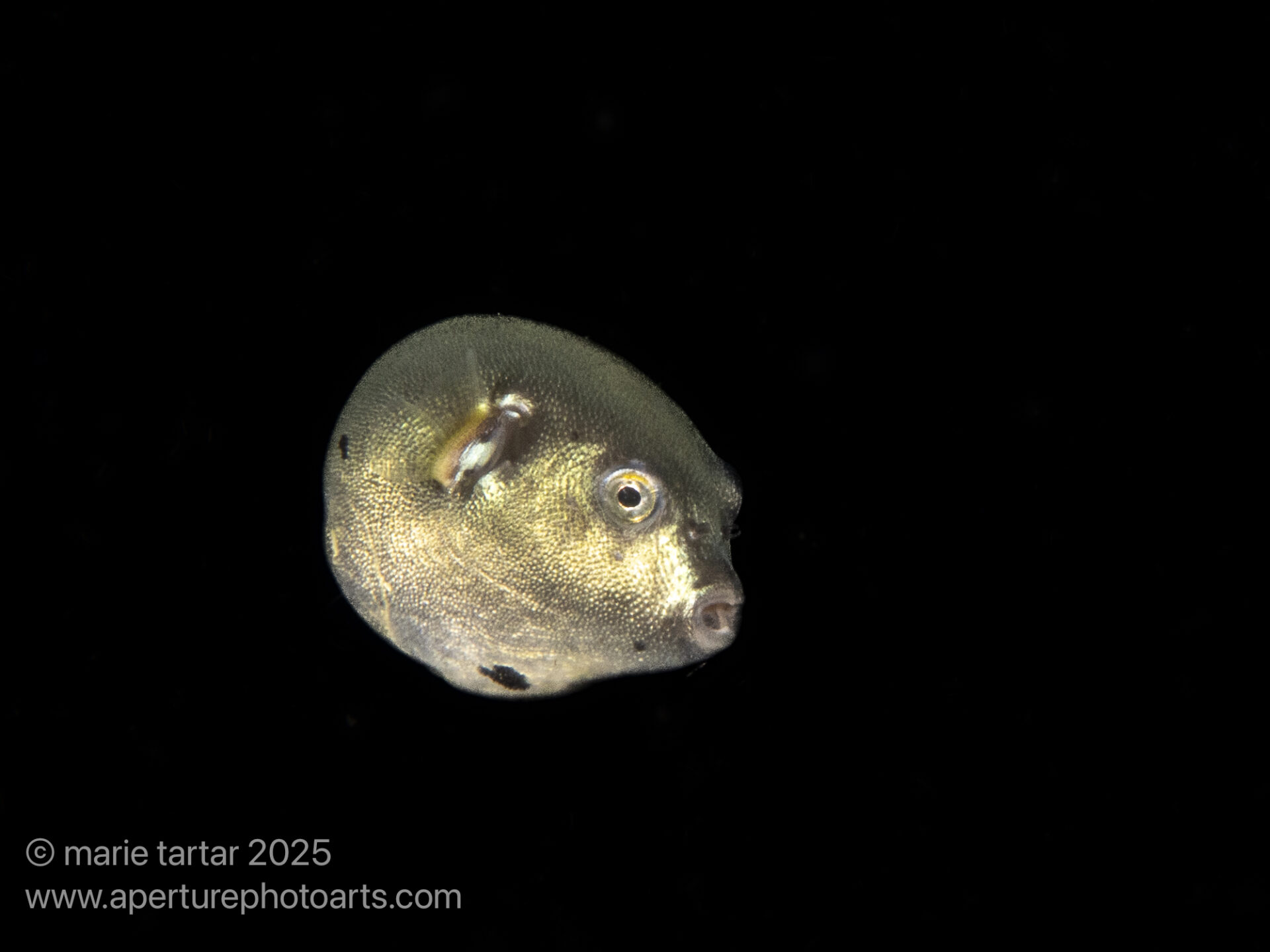
At last! A blackwater subject large enough (2 cm) to easily distinguish from planckton and focus on! Juvenile puffer, Anilao, Philippines.
The second was equally productive, including a juvenile barbelled soapfish, found near line as I approached to take a test shot , which reappeared again at the end of the dive.
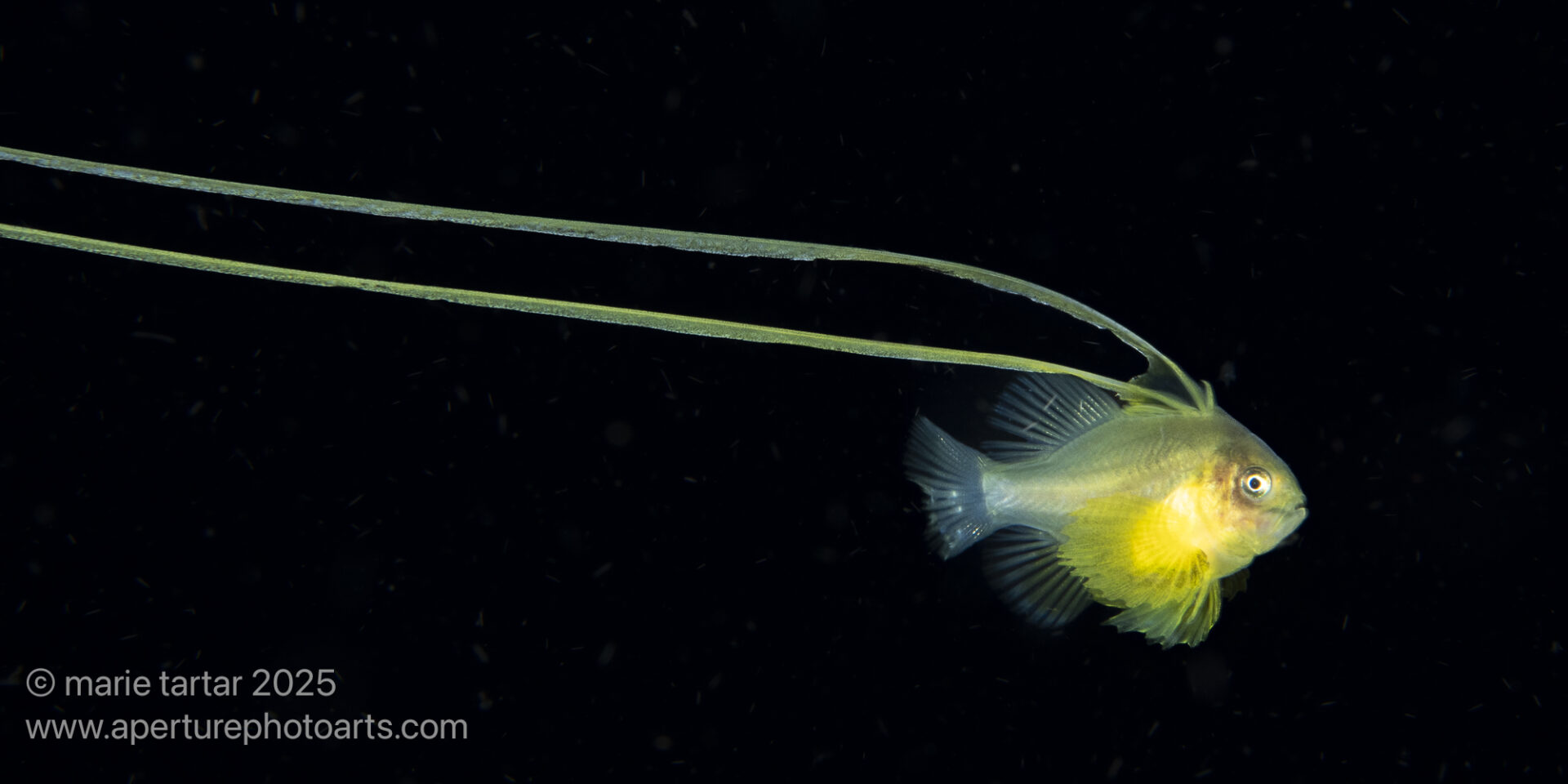
Juvenile barred soapfish, blackwater, Anilao, Philippines. The soapfish’s common name reportedly derives from a toxic mucus coating that may deter potential predators and imparts a foamy quality to water in which the fish are placed. .
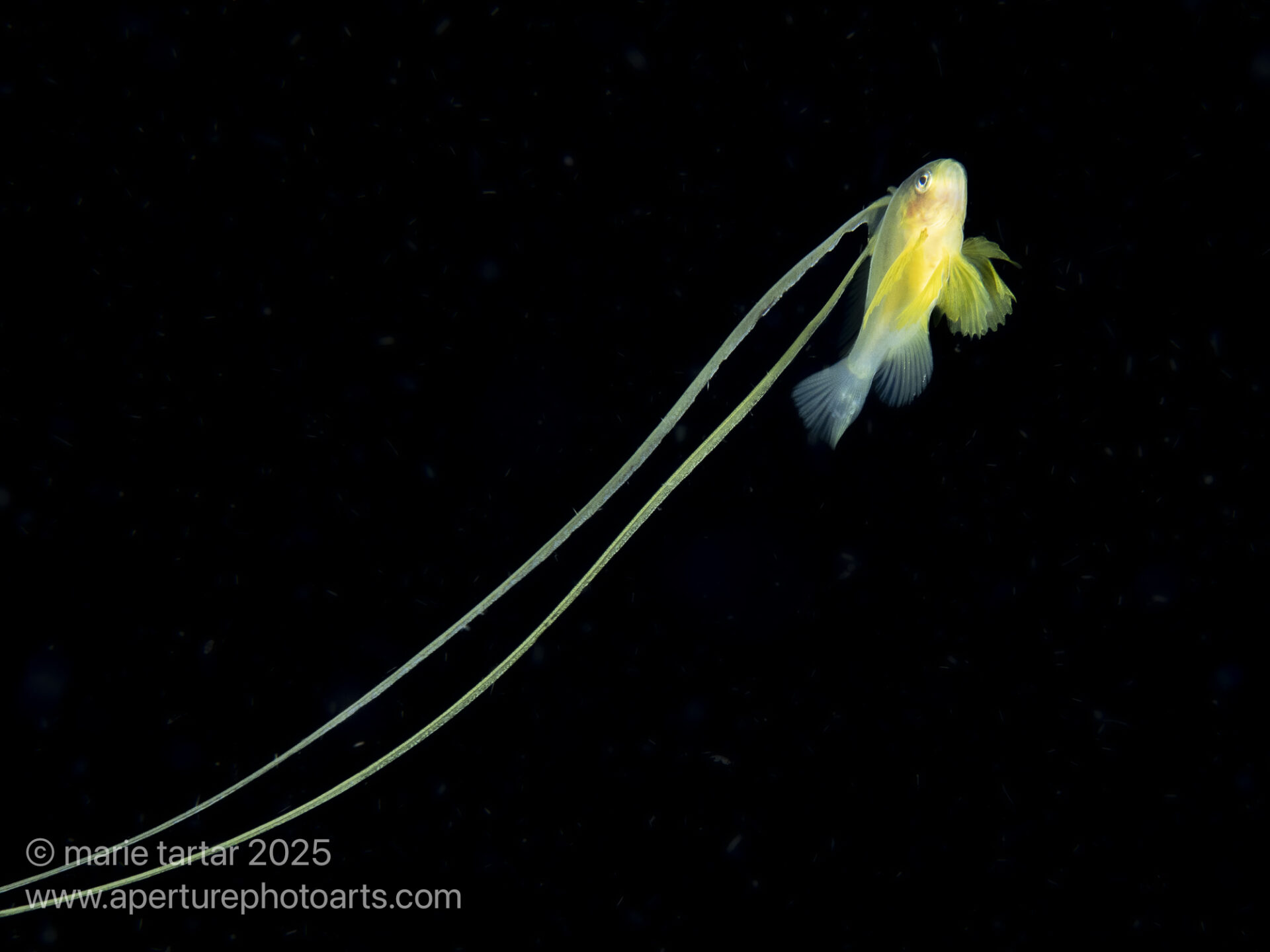
Larval barred soapfish (Diploprion bifasciatum). Many juvenile fishes sport lavish appendages which are not apparent in adult forms. This one was found near the downlight at the beginning and end of our blackwater dive.in Janao Bay.
In between there were crazy crabs, pyrosomes and a tiny squid.
Even our surface interval was more exciting than usual and I am not referring to dinner (white rice, sauteed vegetables, chicken drumsticks). Our lighted float was initially nowhere to be found. It was eventually located, swept far down by the current, much to Dennis’ amazement. I had to laugh at Dennis’ body language, catching a small pyrosome and turning it to look inside, then discarding it as of no interest when he saw it was not occupied by a fish or other creature, the underwater ho-hum equivalent of a shrug.
Working on my camera after midnight after our return, I had the sudden onset of gastrointestinal distress. I barely made it up to the room before disaster struck. It was a draining Pepto-Bismal situation.
Tuesday, April 29, 2025
It was too short a night before I had to take dose number 2 of Pepto. I didn’t feel horrible, just a little washed-out, enough to decide not to risk it and to skip the morning dive at Secret Bay. It was planned to be a 2-tanker so I was pleasantly surprised when Steve reappeared in the room mid-day and said they had decided to come back to have lunch and would do an afternoon dive.
I was feeling up for diving after resting in the cool room in the morning, listening to Dream Count by Chimamanda Ngozi Adichie and dozing. With 3 doses of Pepto on board, I felt reasonably secure about venturing away from a toilet.
The afternoon muck dive at Cayzer turned out to be a doozy. Dennis mentioned a guide friend told him about a rare fish at 45 feet depth that we would go in search of it. In 20 years of diving, he had only seen a juvenile zebra batfish (Platax batavianus) a couple of times.
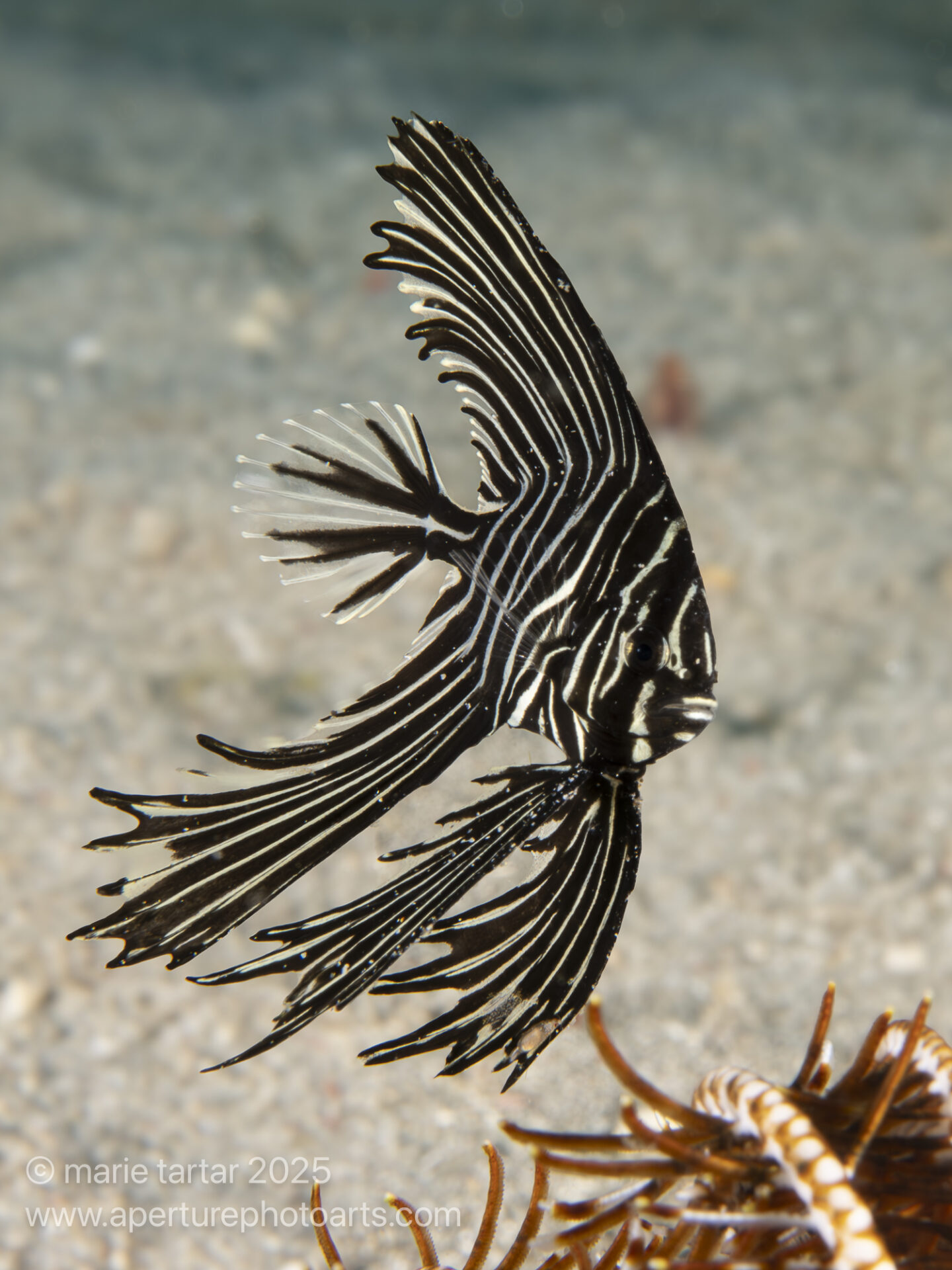
A rare beauty, a juvenile zebra batfish, which bears no resemblance to its adult morphology. (Platax batavianus), Anilao, Philippines.
We found it promptly, hovering adjacent to a coiled-up crinoid. We took turns photographing it. I had my CMC accessory but the fish was too big for it, so I flipped it out of the way. Checking my result underwater, Dennis seemed to like my composition.
While Greg was shooting the zebra batfish, Steve found a bright orange puffer (previously shown). The terrain otherwise seemed barren.
Suddenly, an intense current directed down slope developed, making it difficult to hold position on the sand. Dennis motioned for us to move up the slope, which proved to be incredibly difficult. We were digging our pointer sticks into the sand to try to drag ourselves up slope. I was behind the others, who uncharacteristically were kicking up a mountain of sand trying to make headway against the torrent. Operation Desert Sand, I thought to myself.
We made it up to about 25-30 feet with tremendous effort. It was a relief when Dennis took my camera off me, not that I was able to move that much more easily. It was an even greater relief when he signaled we should abort the dive. An encrusted line materialized as we drifted, enabling us to do a safety stop, clinging to the line, fully stretched out like a battalion of flags.
On the surface, we could see the boat in the distance, tied to a mooring near the shore. Thankfully, they were able to hear Dennis’ whistle. Trying to board the boat when it approached was an adventure. We were in a very active pitch of water, with waves, so active I kept my regulator in my mouth and mask on. Dennis managed to board on the first approach. The three of us were swept between the boat and the outriggers, which were pitching enough Steve was struck (lightly) on the head. The boatmen signaled for us to wait as they repositioned. In a calmer patch of water, we were finally back on board, relieved.
The evening was equally eventful. Greg flew his drone as the sunset cycled through a pastel medley, just before we headed out for an evening at sea, again planning two black water dives, bookending our dinner of fish, vegetables and rice, packed by the dining room in plastic containers.
The first dive, in Janao Bay, was spectacular. As soon as we entered the water, we found a pair of squid, unusually approachable.

I never tire of marveling at the changing colorscape of squid (bigfin reef squid or Sepioteuthis lessoniana)
The larger of the two appeared to have a glowing red eye. At least that’s how it looked to my eye, although this isn’t apparent in my photographs.
But the undisputed star of the evening was another tiny diamond squid, which Dennis encouraged us to shoot from above, an exception to the usual rule of positioning ourselves to shoot at an animal’s eye level.

Diamond squid! Two nights in a row, what luck. Did you know? They are the only known monogamous species of cephalopod?
Having a second chance at a diamond squid was a relief to both me and Steve, as we both felt we underexposed the prior evening’s opportunity.

Tough to pick a favorite image of such enchanting creatures, but maybe this is it? Bigfin reef squid (Sepioteuthis lessoniana), blackwater, Anilao, Philippines.
Back at the line, heading up towards our safety stop, I again found a pair of companion squid, hanging out at 22 feet and seemingly not dissuaded by my presence.

Bigfin reef squid (Sepioteuthis lessoniana): Mesmerizing to watch, amazing iridescence, too magical to eat! Blackwater, Anilao, Philippines.
Our second black water dive in Balayan Bay was just bizarre and ultimately, cut short at 38 minutes, a good call on Dennis’ part. It started out routine, albeit quiet. I felt like I couldn’t fine-tune my buoyancy, which made me wonder if the connection of my BCD inflator had again worked itself loose, so that any air I introduced into the bladder immediately dumped out. We were being bounced up and down, now 45 feet, then suddenly 70 feet, below the bottom of the lighted line. Although we didn’t see any creatures of note, we suddenly happened on what I initially took to be a huge kelp stalk or maybe Jack-in-the Beanstalk’s ladder. It was a mooring line, which the current was sweeping us and our lighted line past. Looking up, I could see bubbles swirling, a distinctly unusual sight, especially at night, in black water! Then I saw Dennis making hand gestures in his light to come up shallower (have I mentioned he was a great underwater communicator?) and I saw Steve actually pulling his way up, using our lighted line. Normally, touching the line is forbotten, as it disturbs the surrounding halo of plankton. At that point, I started kicking determinedly to ascend. Normally I don’t really work to ascend but this night I did. I had already added air to my BCD and was afraid if I added too much, I might be shot to the surface, as volatile as the swirling current seemed that night. I joined the group at the surface and we did our safety stop. Once our heads were out of the water, we again encountered an unusually choppy surface, which had been glassy smooth when we entered.
Wednesday, April 30, 2025
We settled into a new pattern of one morning dive, an afternoon dive after lunch back at the hotel and two blackwater dives, with a portable dinner consumed on our nocturnal surface interval. My one indulgence was a mango shake in the afternoon, consumed in a race against the collapse of the paper straw.
The morning dive at Arthur’s Rock saw me finally attaching and employing the CMC on my macro rig. This paid off with a large skeleton shrimp and a black and white striped squat lobster in a matching crinoid.
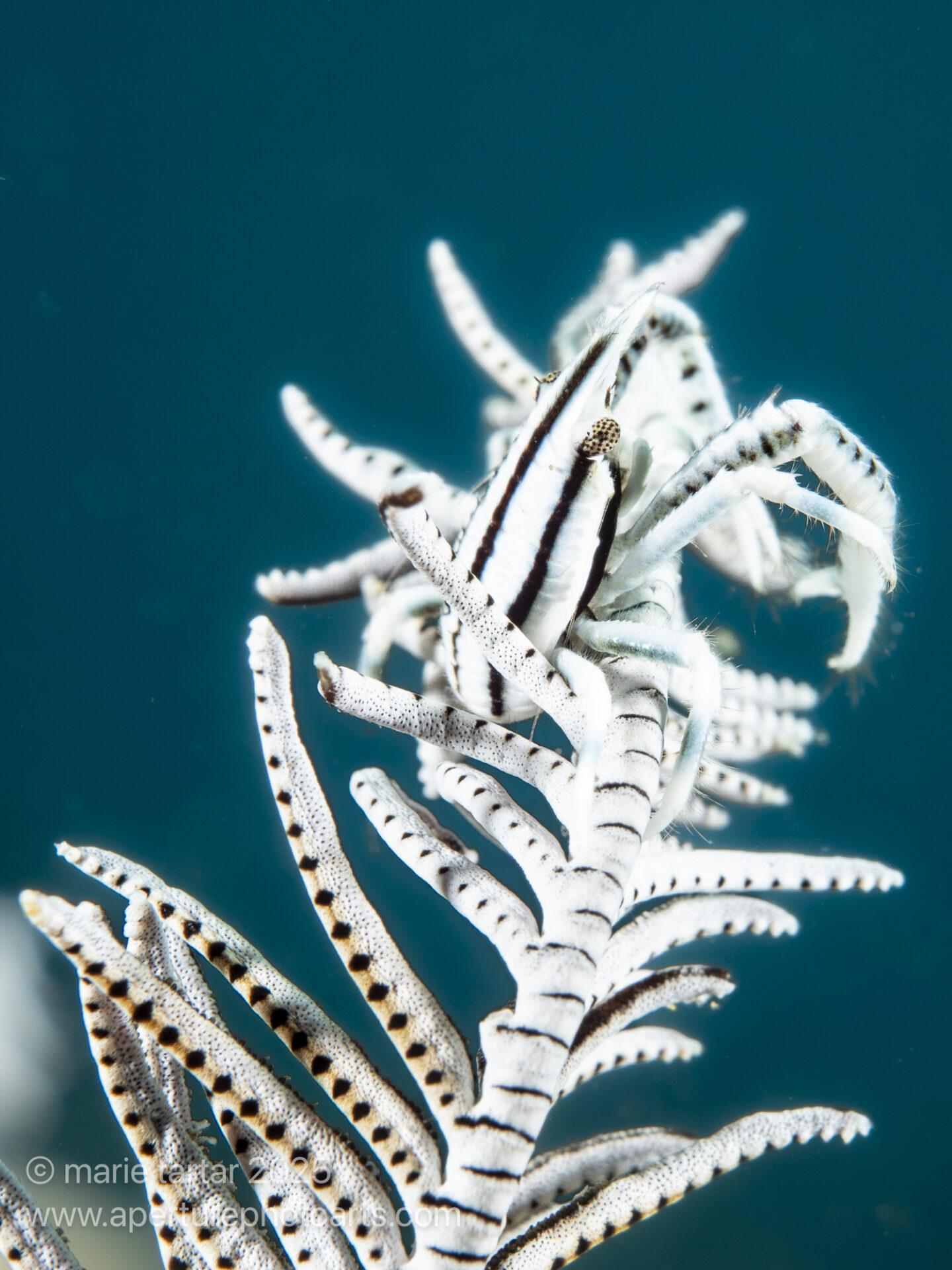
These black and white crinoid also host matching squat lobsters (Allogalathea elegans). They are actually more closely related to hermit crabs than lobsters, despite the common name.

Another misnomer, not actually a shrimp although commonly known as a skeleton or ghost shrimp. By Caprellidae standards, this amphipod was a giant. (Anilao, Philippines) and presumably a male , given the high sexual dimorphism of this family of amphipods.
In the afternoon, we dived Cayzer.
Our first black water dive in Janao Bay was rather quiet. A couple of moon jellyfish were the only sizable subjects to emerge from our searches of the particulate-filled water. When I saw Steve’s image later of a trio of translucent white fish perched on a moon jelly, I wished I had spent more time perusing the tumbling globes.
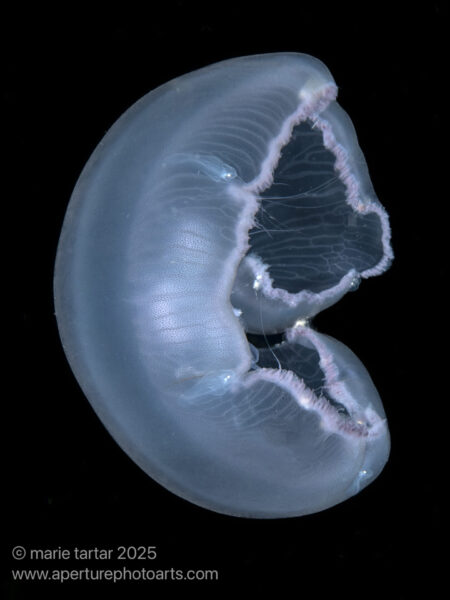
Translucent stowaways hitch rides on a moon jelly (Aurelia aurita) during a blackwater dive (Anilao, Philippines).
The second black water dive, in Balayan Bay, was a more ceremonious send-off, with streamer-festooned juvenile fish, a large reef squid, a golden juvenile puffer and a tiny and spectacularly striped translucent flounder.
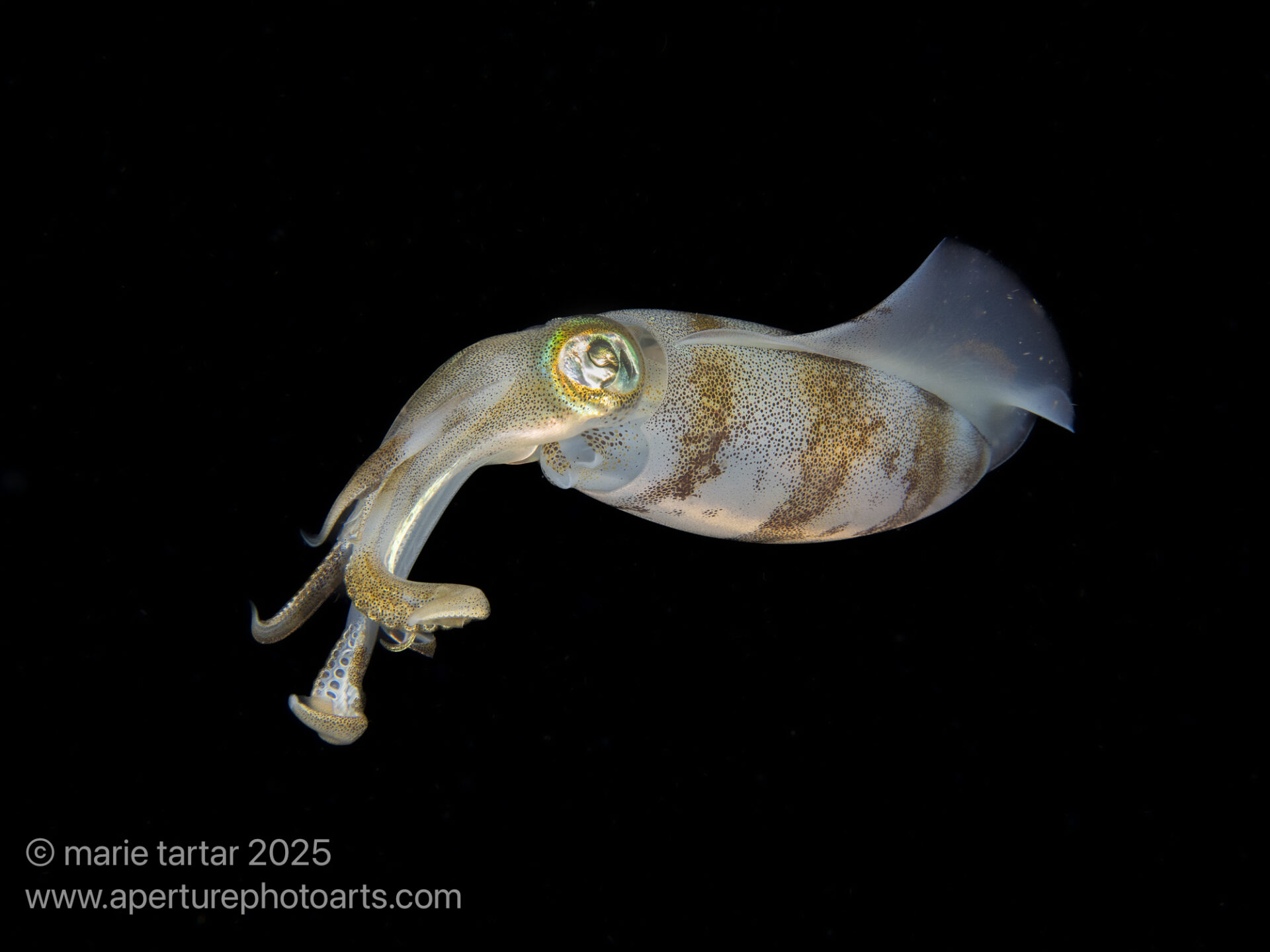
Keep on Truckin’ pose popularized by R. Crumb way back in 1968 comes to mind in the positioning of this beauty of a bigfin reef squid (Sepioteuthis lessoniana), blackwater, Anilao, Philippines.
My sleep was again disrupted by another bout of diarrhea, curtailed with two doses of Pepto. Now, I really had to suspect Aiyanar’s food (although Steve and Greg were unaffected). It seemed too far out now to implicate the lounge at LAX or the food aboard the airplane.
The following day, we’d be driven back to Manila to overnight. We’d be meeting up with the group assembled by Lynn for a journey to Malapascua the following day and hopefully, dive with their marquee marine star, the thresher shark. I was amazed how productive these four diving days (nights) had been and how little overlap in sightings we had between our prior November blackwater experience and this sojourn. We really enjoyed diving with Dennis as well. He is an excellent spotter, guide and snoot wrangler. I am sure we will return to Anilao for more blackwater. At that point, we’ll have a dilemma-stay at Crystal Blue (better food but can’t dive with Dennis, who is an independent dive guide) or return to Aiyanar to dive with Dennis and avoid the salads (if that was the culprit).
-Marie
Spoiler alert: the threshers were abundant at Malapascua! Here’s a preview:


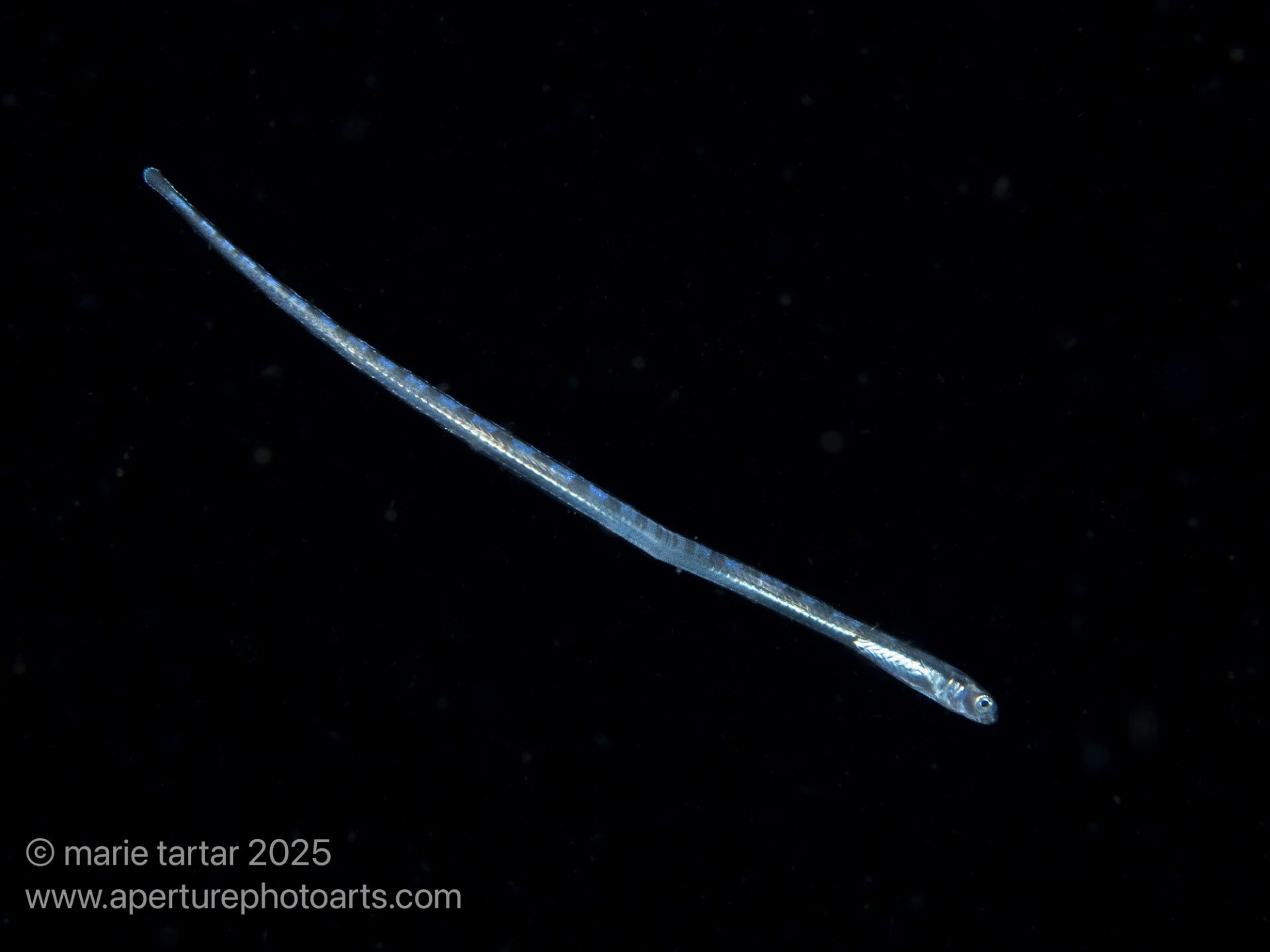

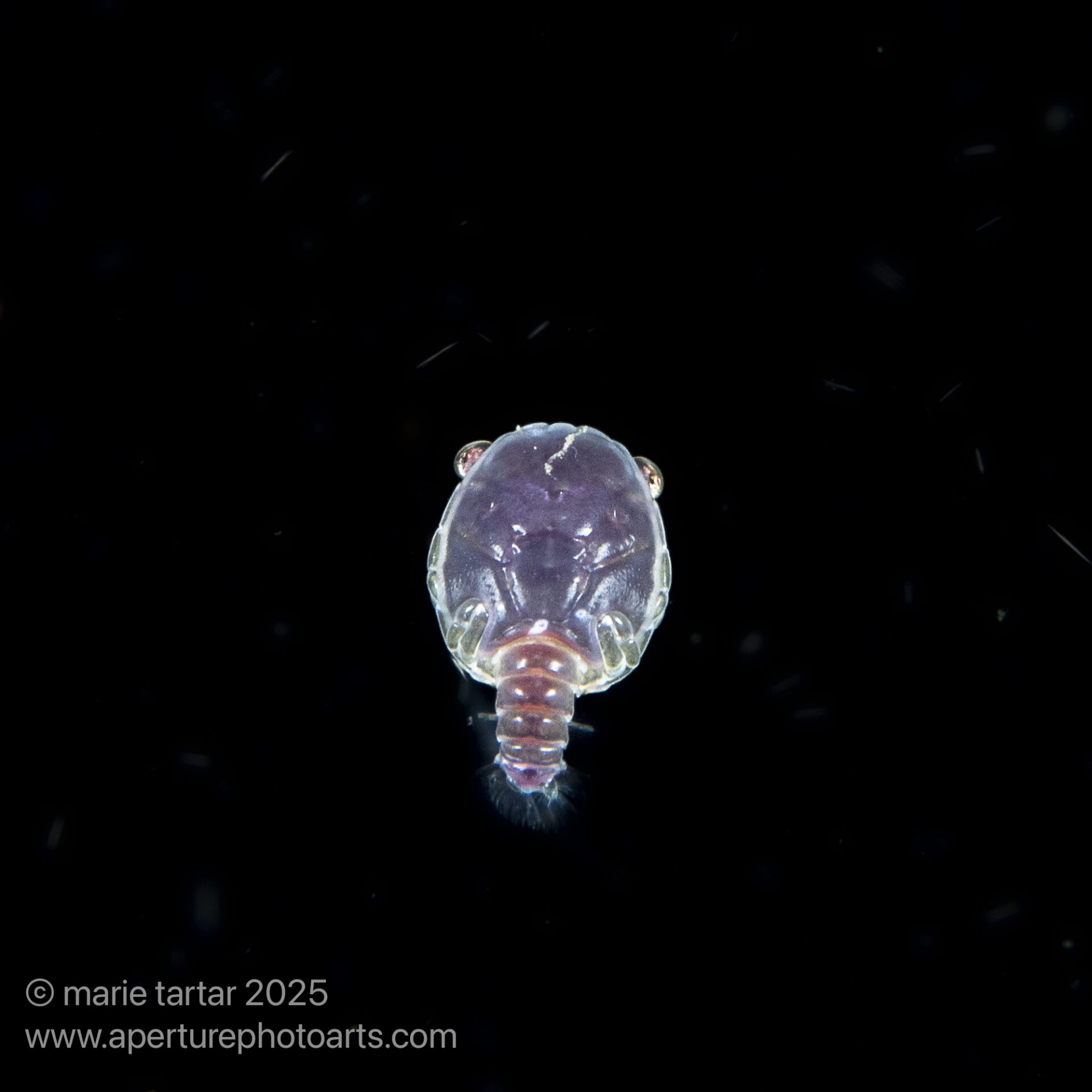
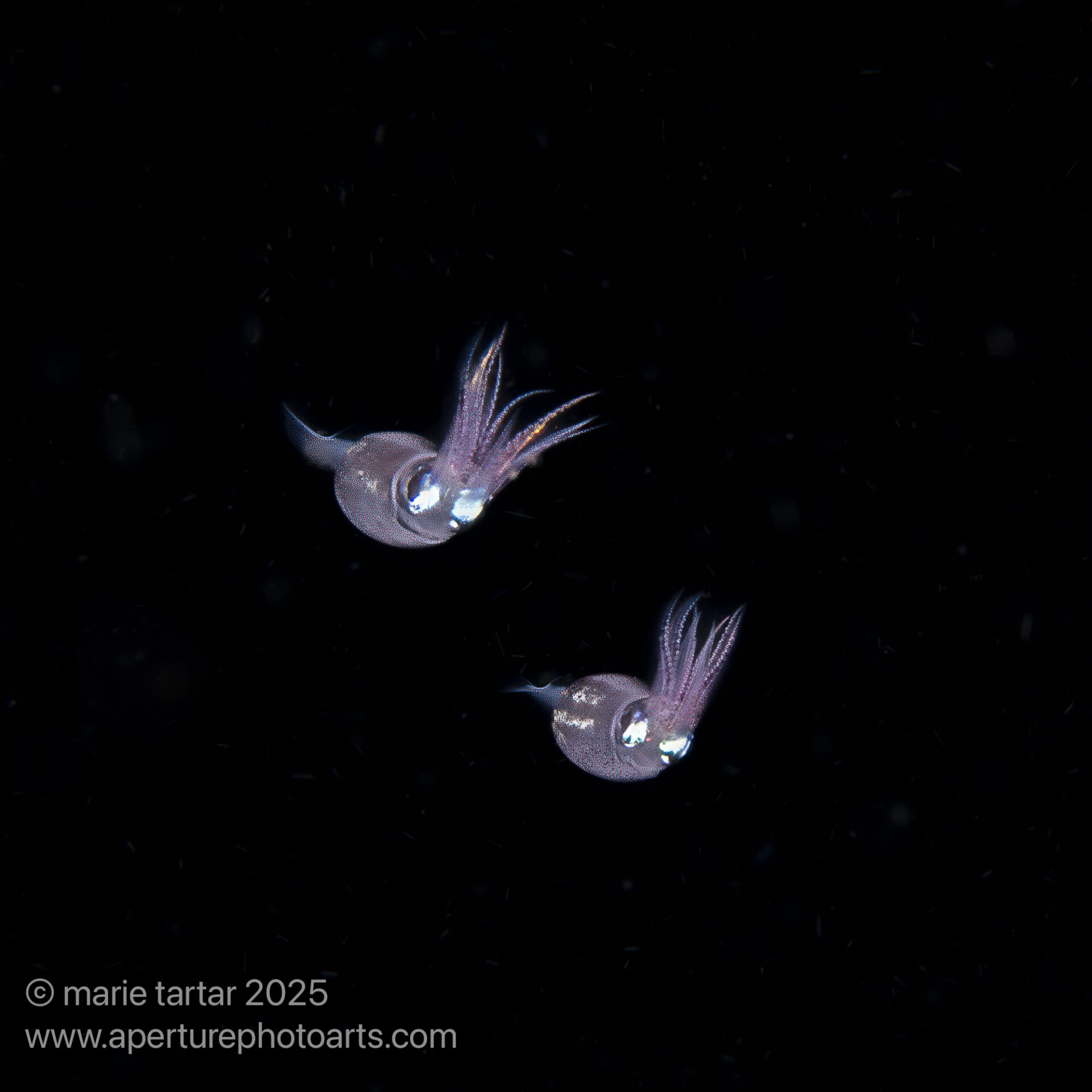
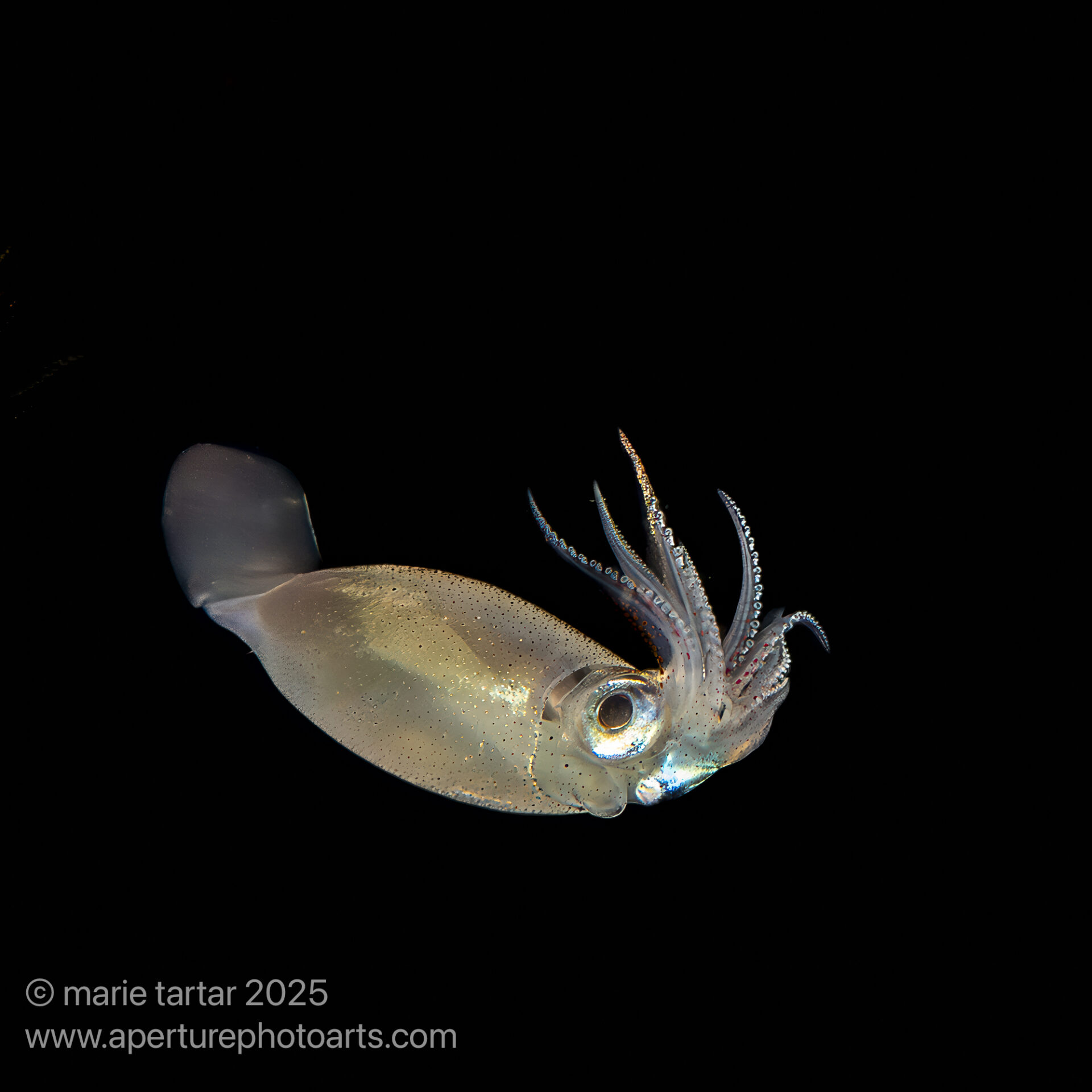
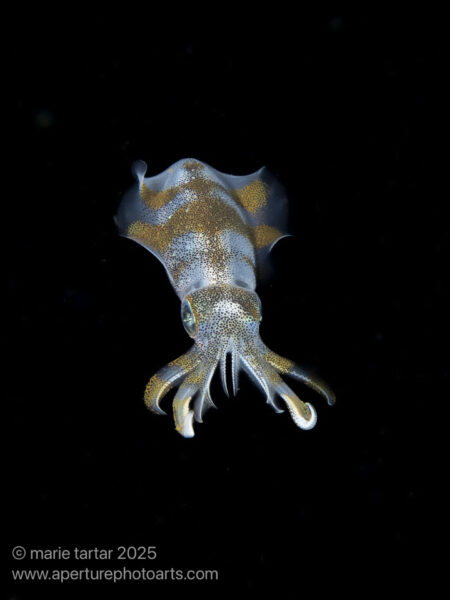
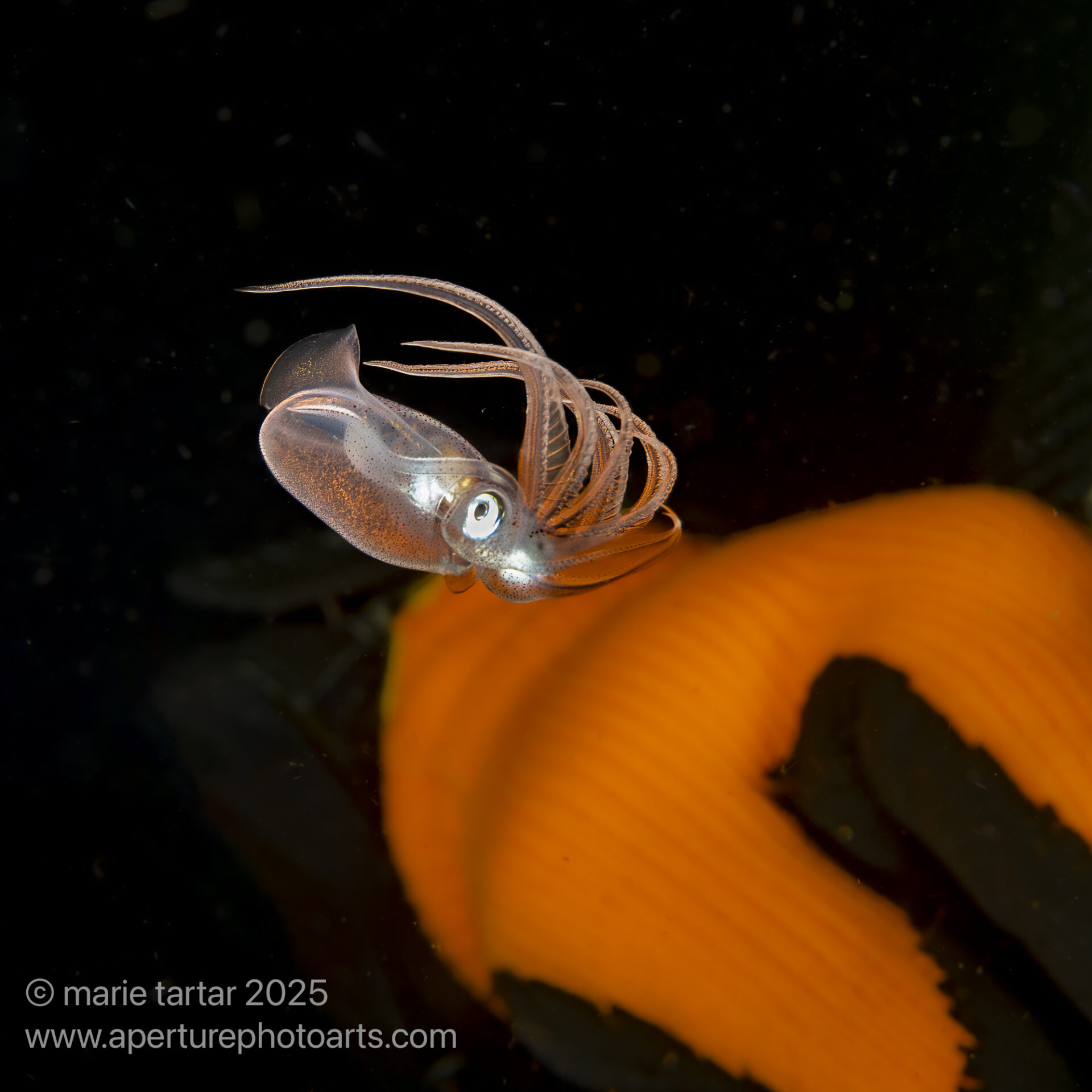


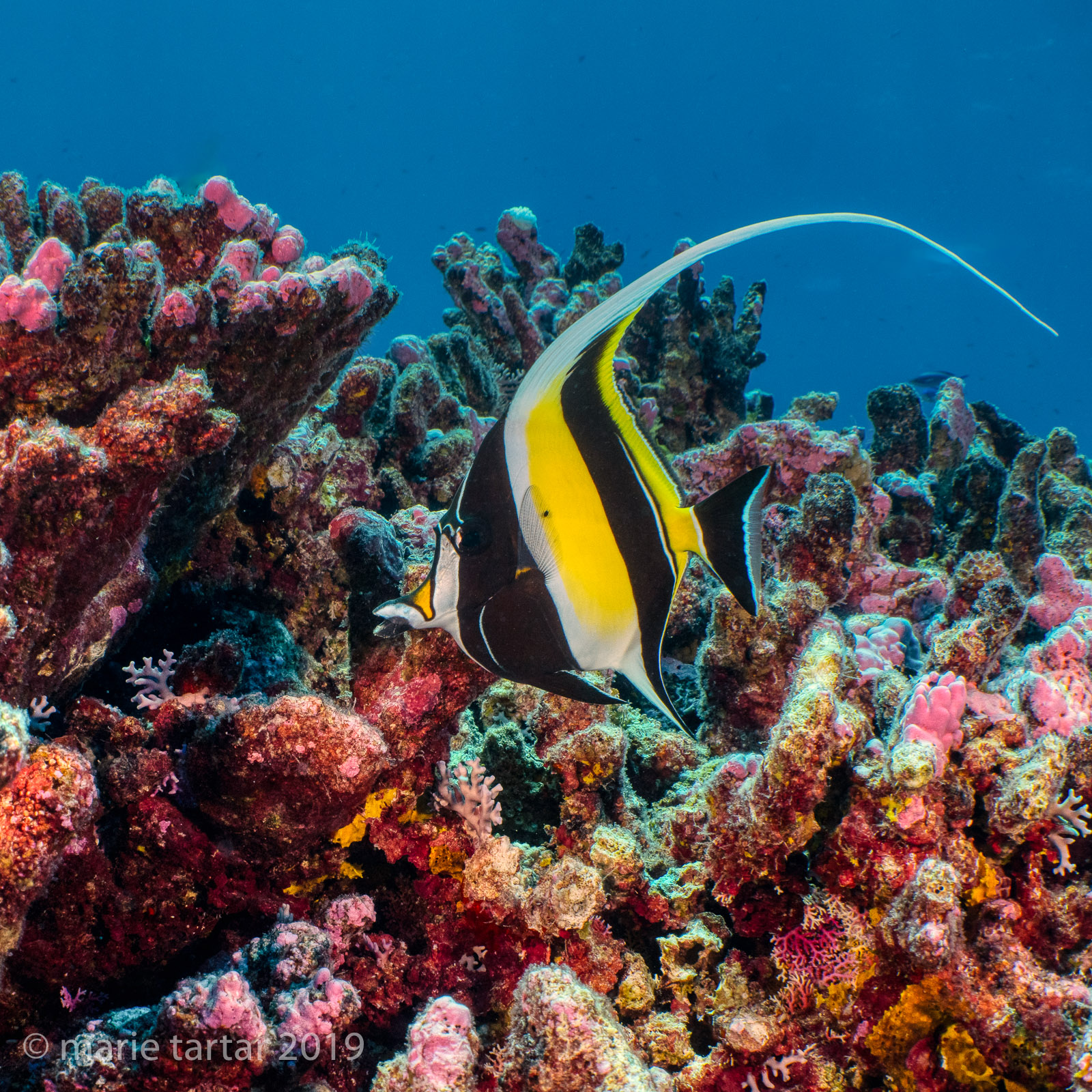
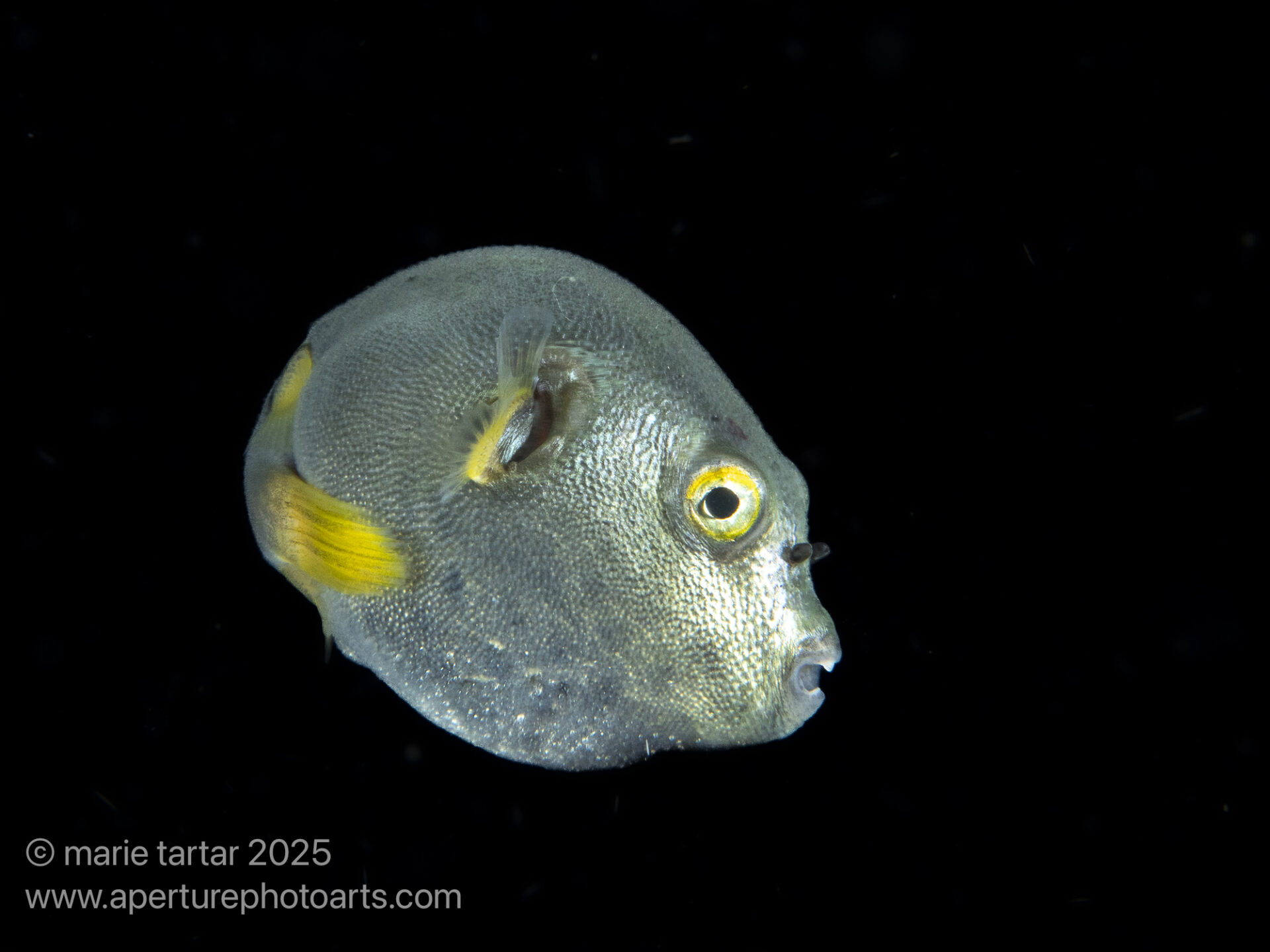
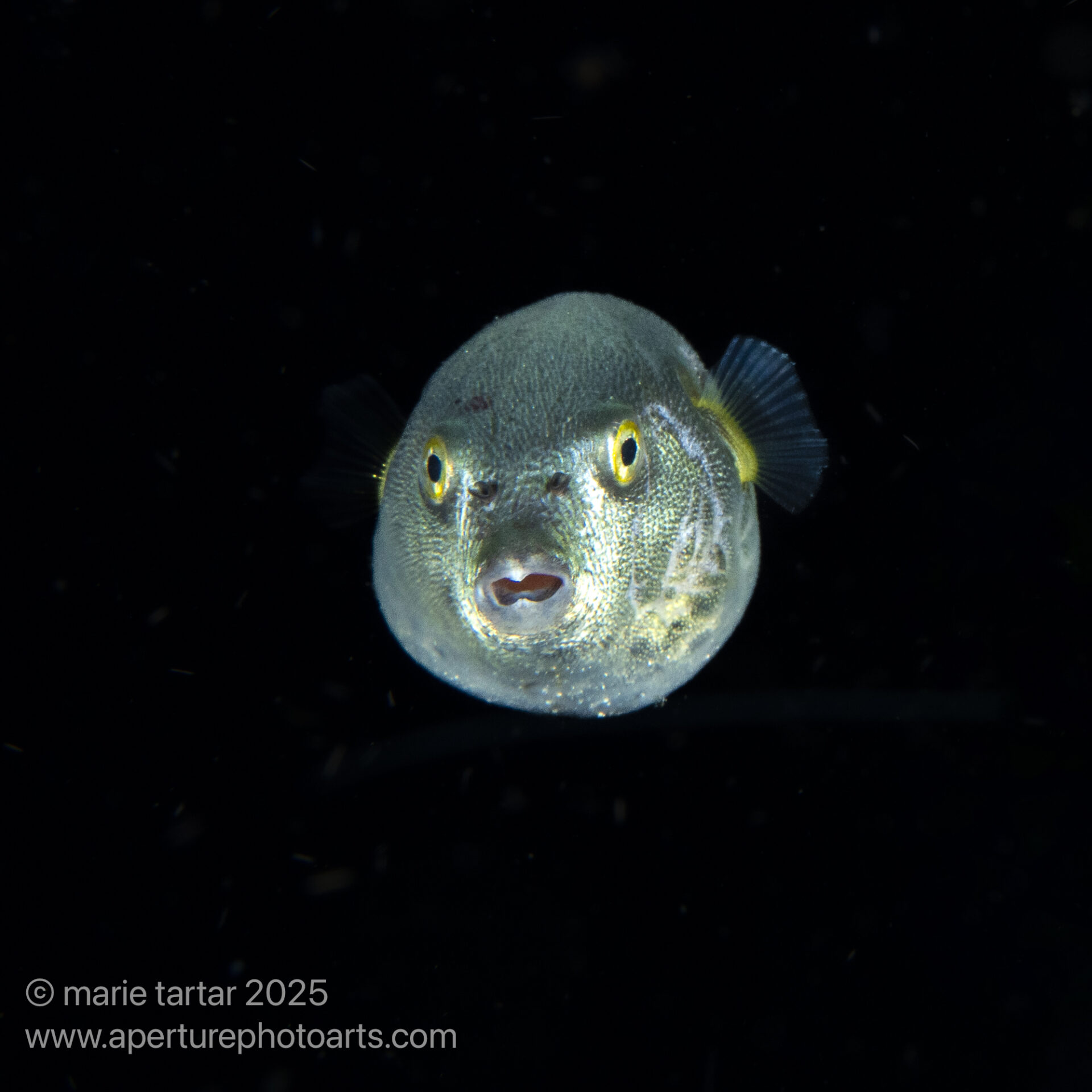
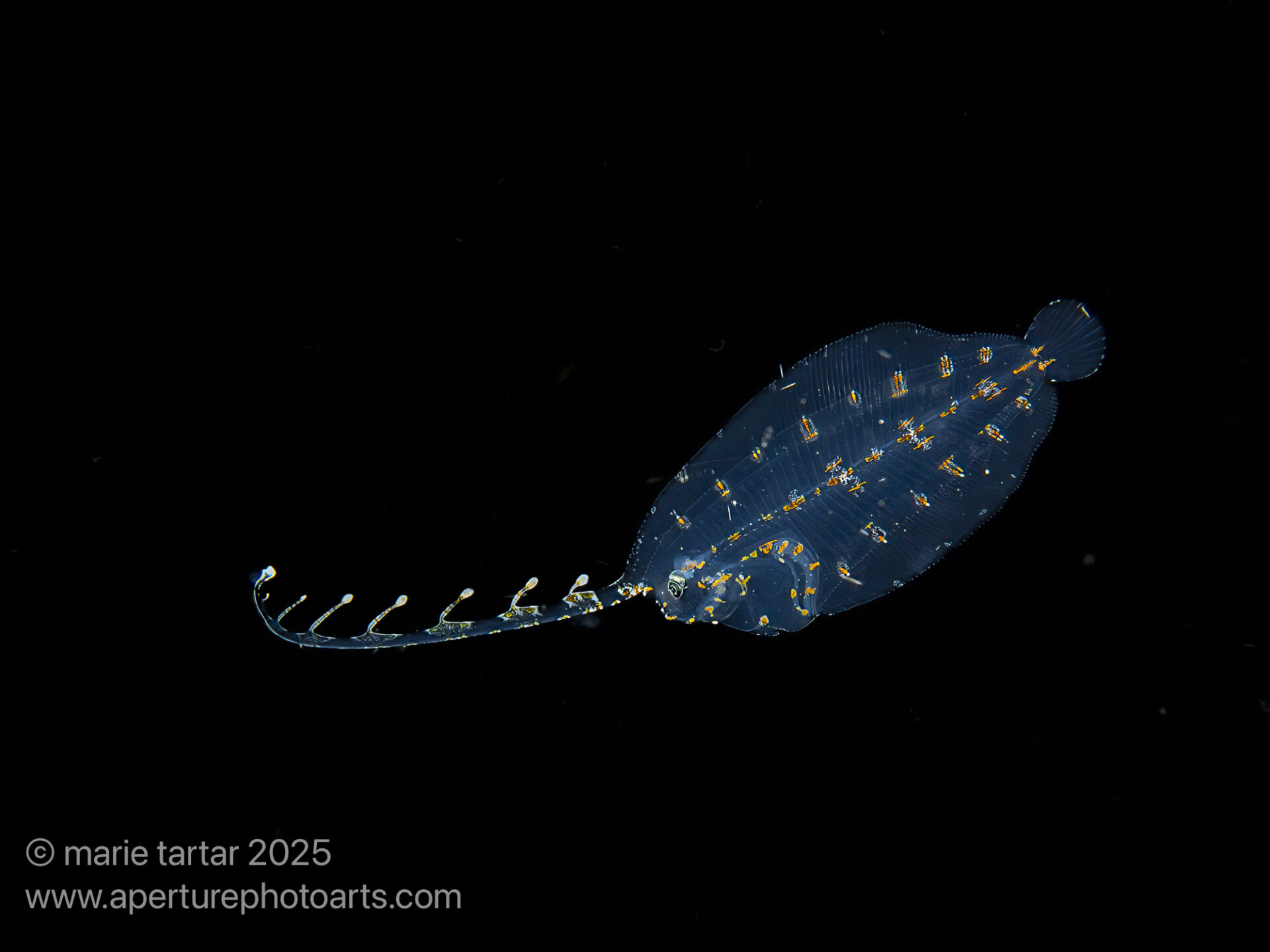
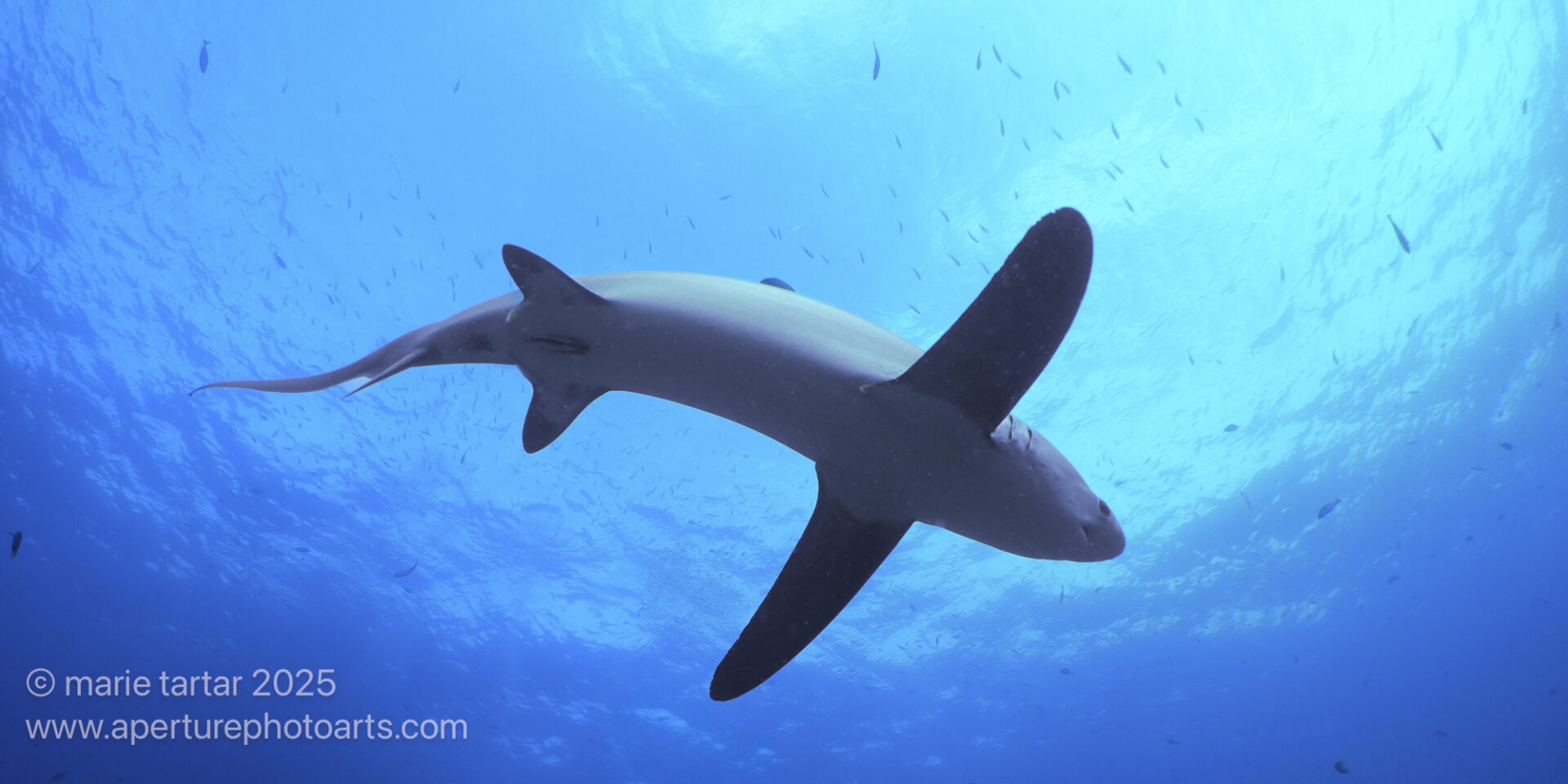
This was especially wonderful, Marie, just spectacular, with enough danger and discomfort to vary the beauty.
Thanks, Susan for your perseverance with the spam filter!
-Marie
Amazing photos, as always! You two are my heroes.
A whole other underwater world to explore!
-Marie
Hi Marie, Greetings from Sydney, great blog and photos. I agree with your assessment of this resort, I have stayed at Aiyanar my last three trips to Anilao, I like the resort and the dive guides are great however the food is definitely not up to the standard of Crystal Blue. I have eaten down the road at Solitude on occasions which is rather nice. Heading to Aiyanar next week and looking forward to a solid couple of weeks warm water.
Teresa, I’m so jealous of your proximity to Anilao! Happy hunting,
-Marie